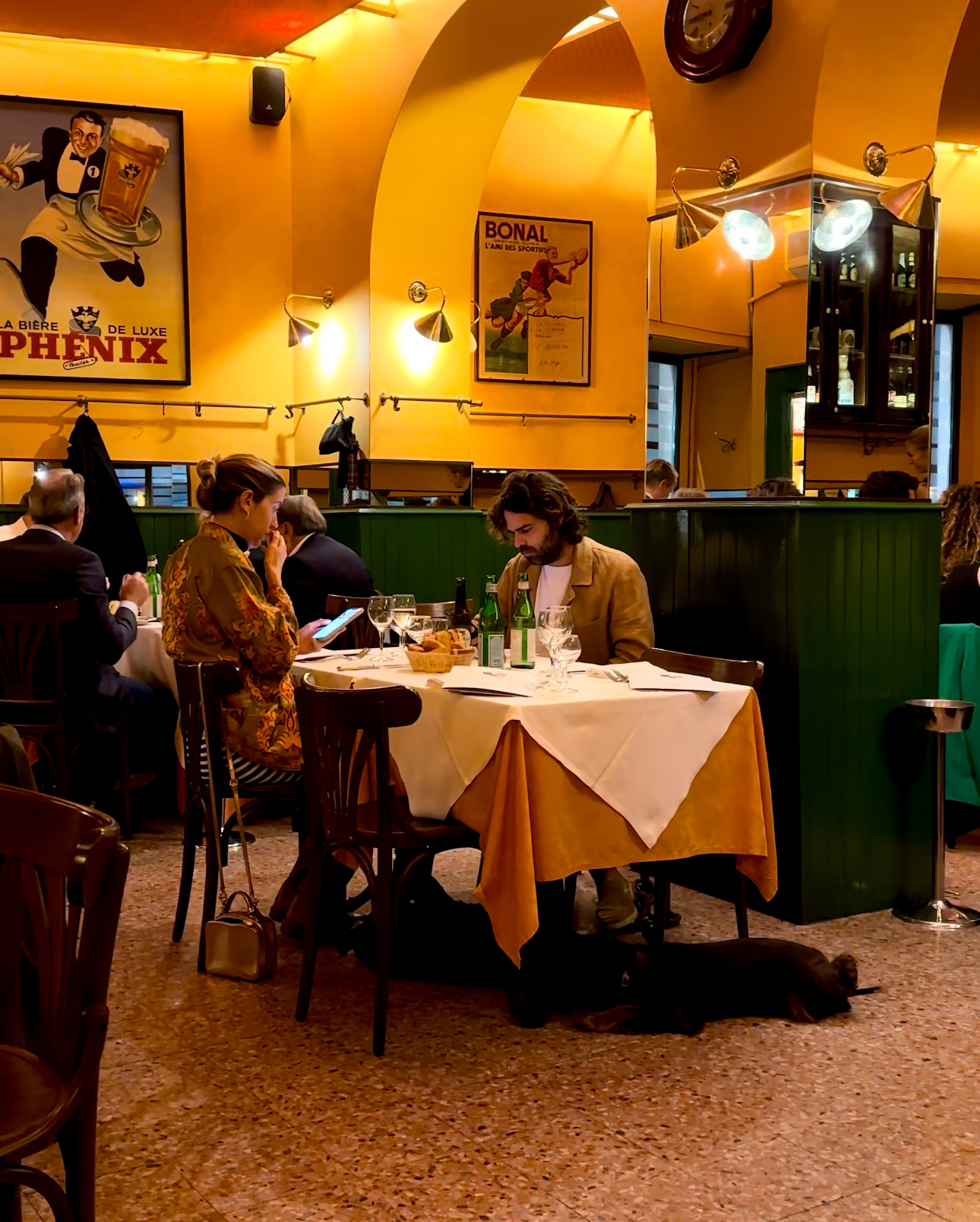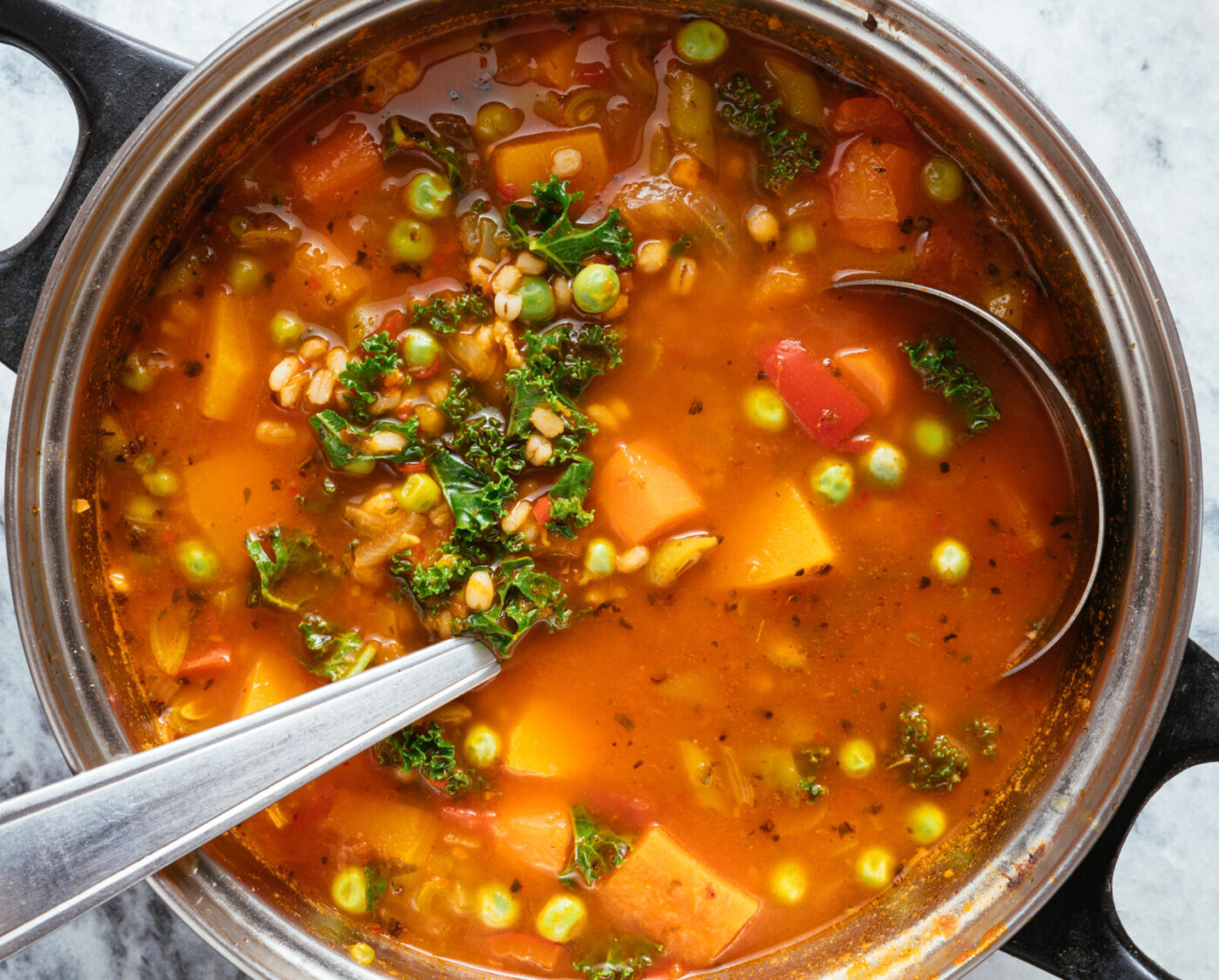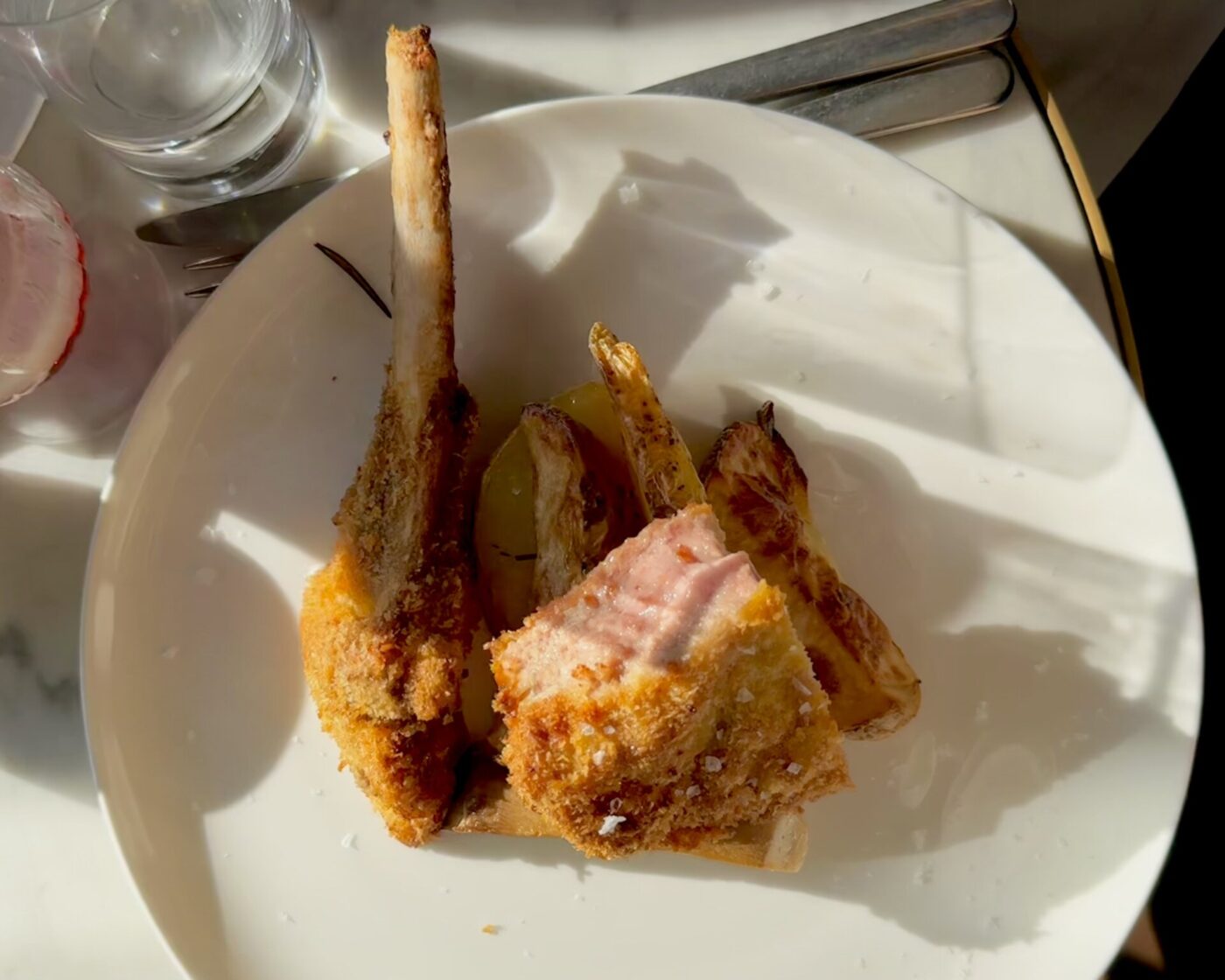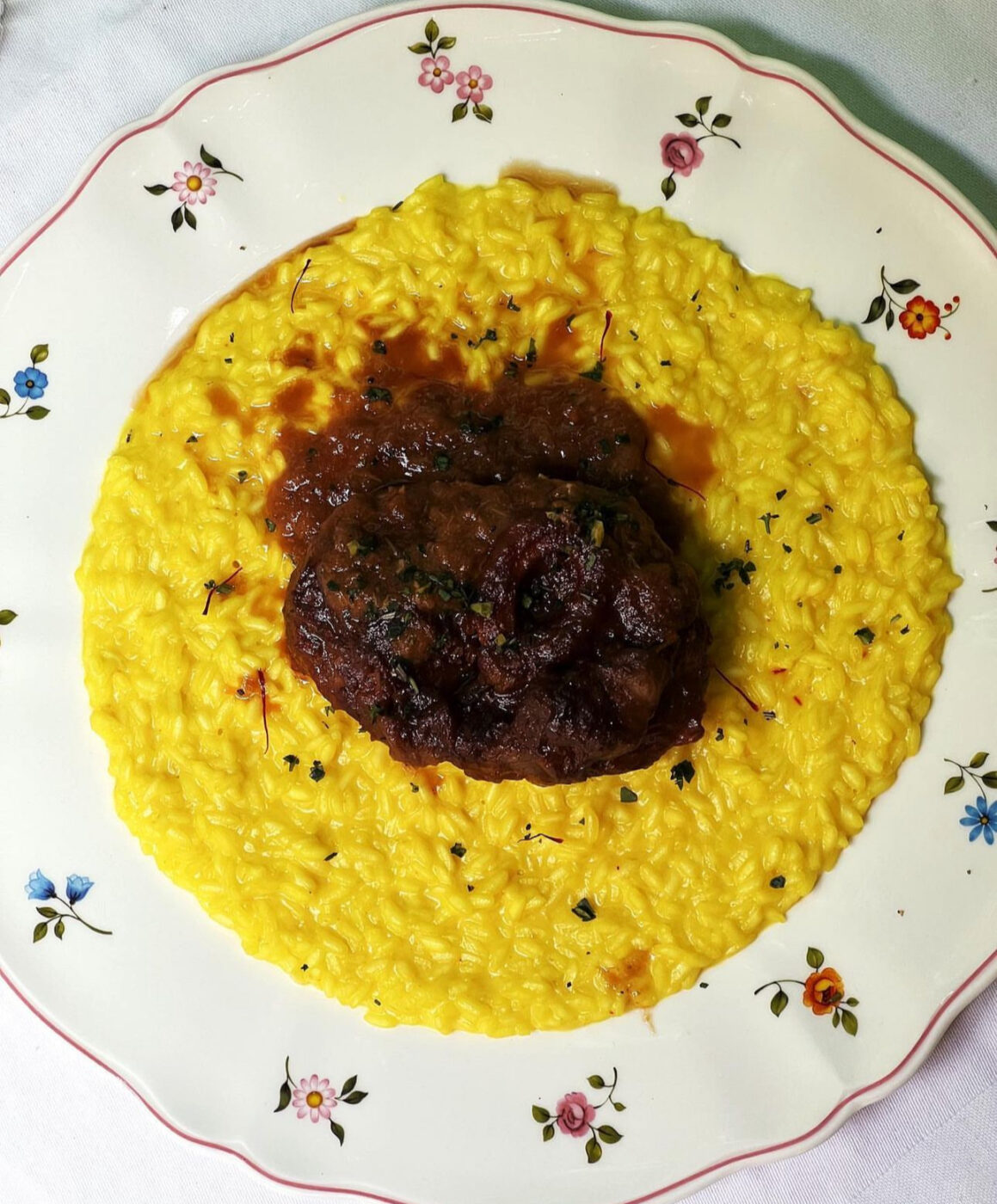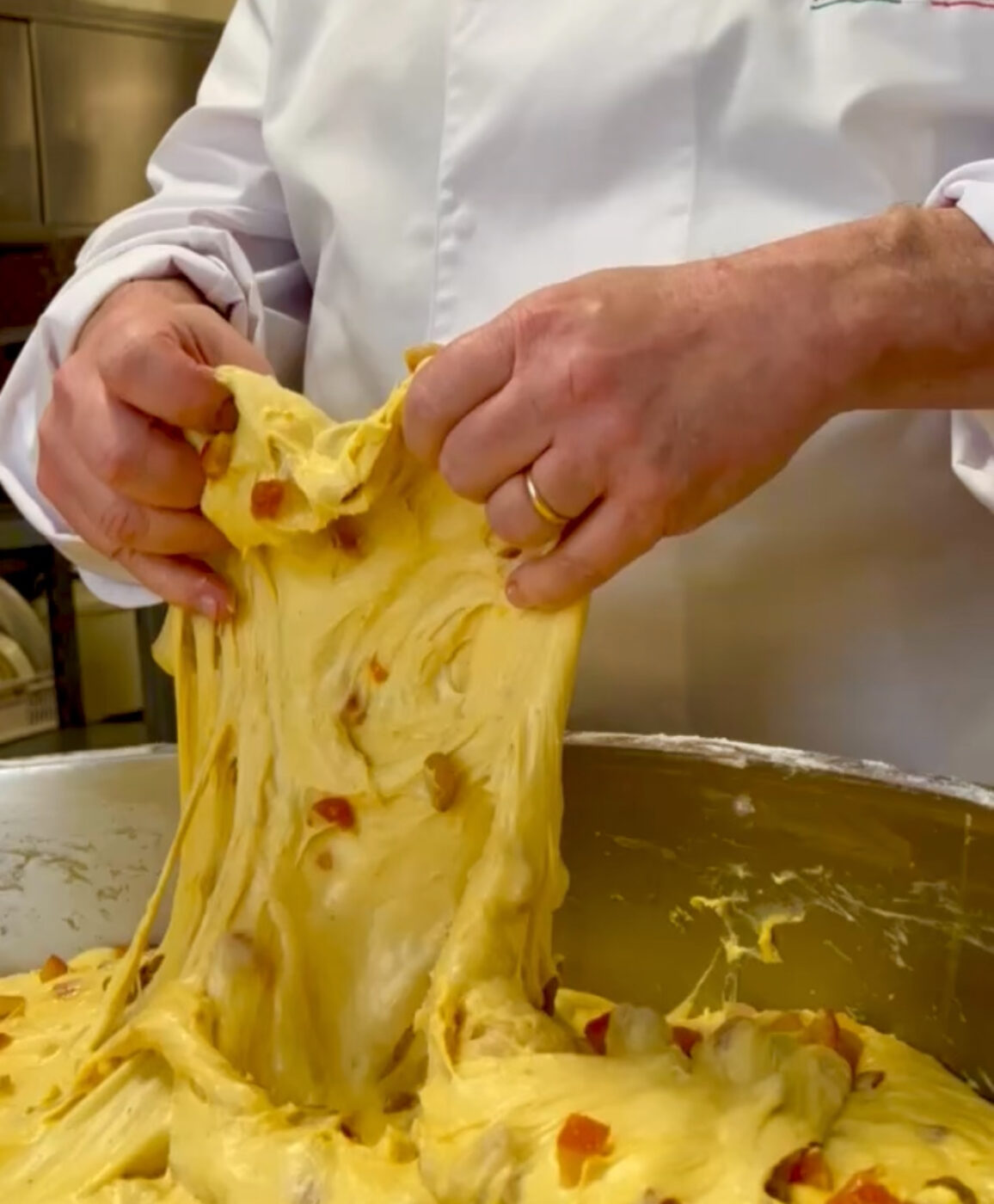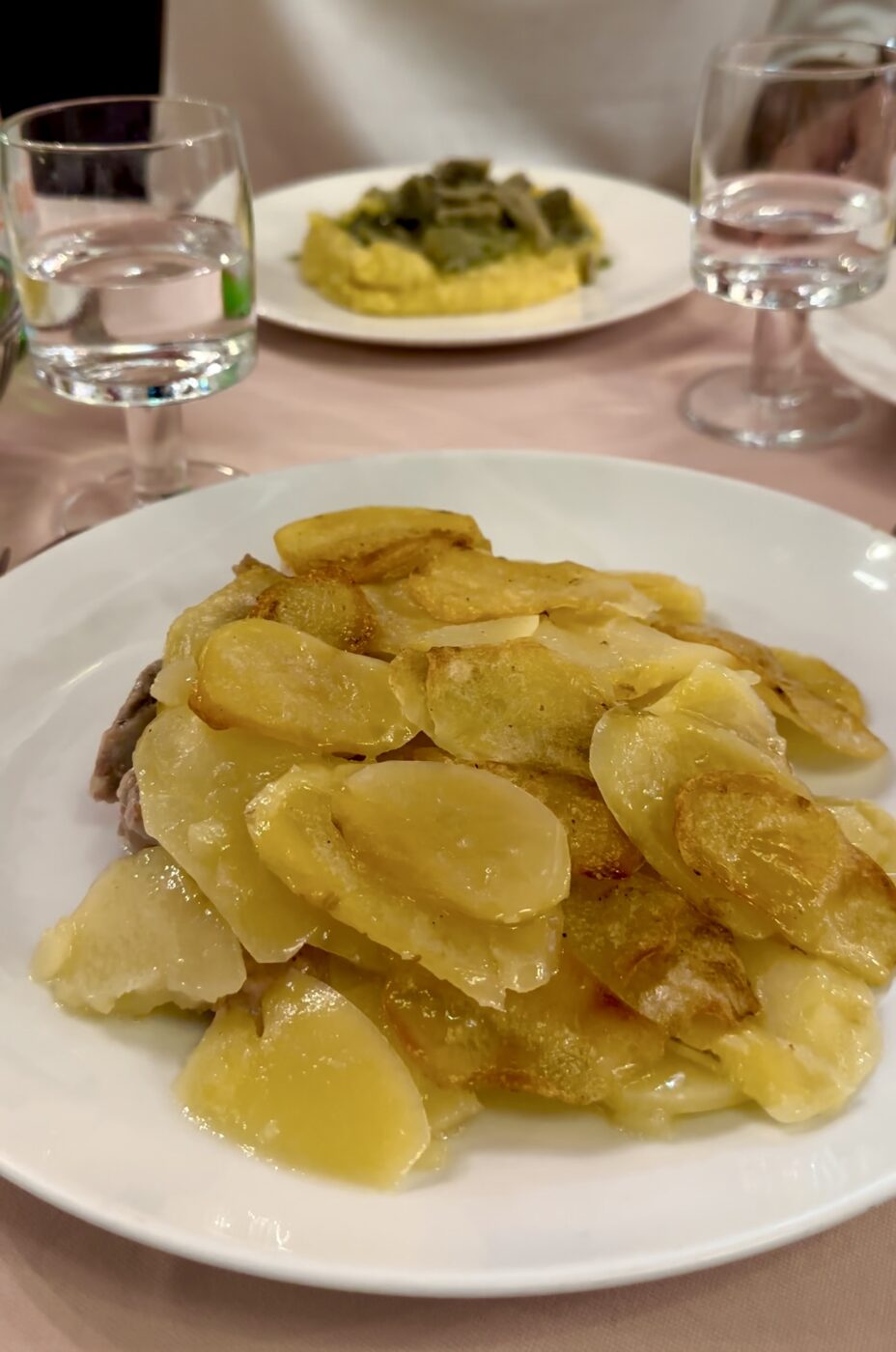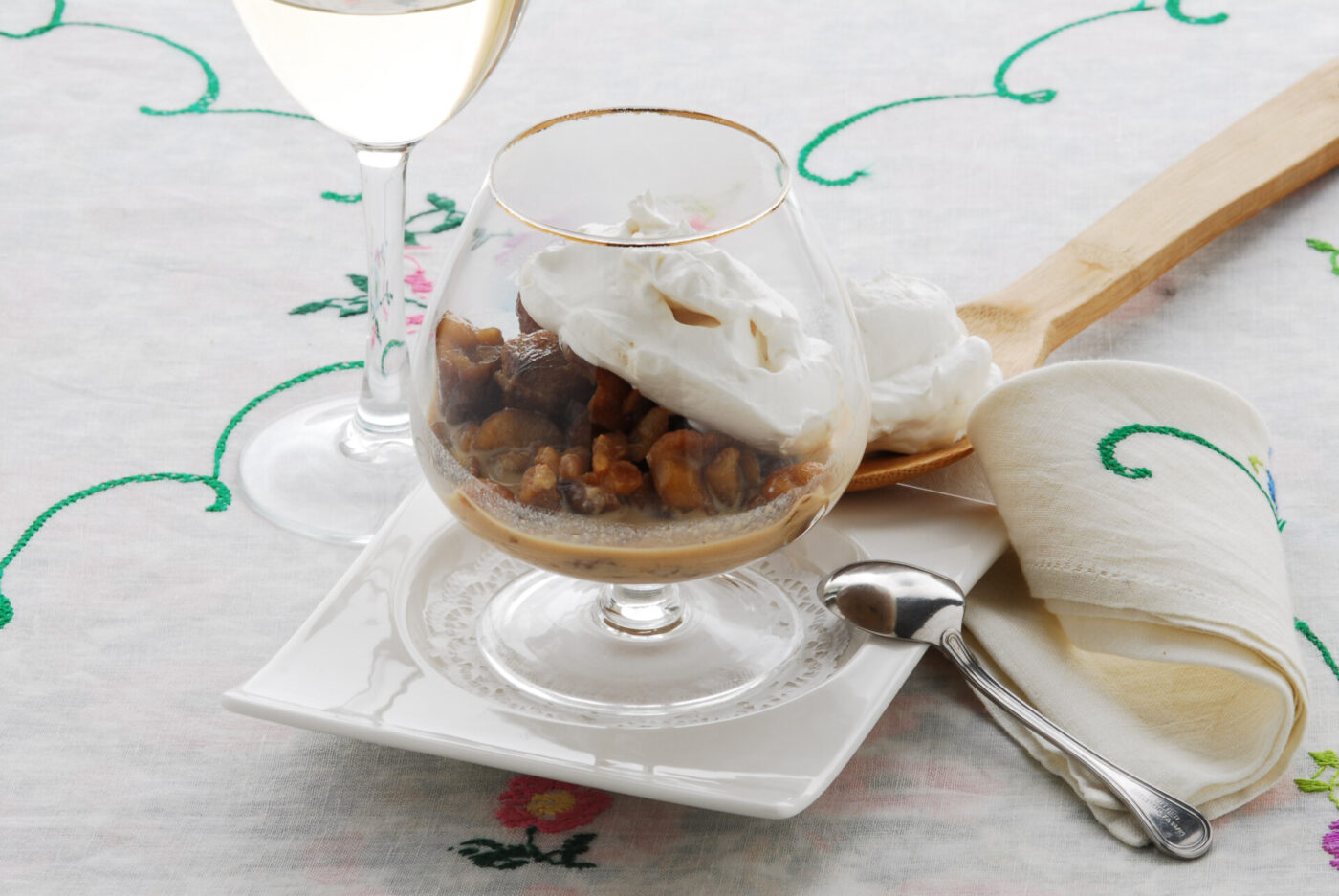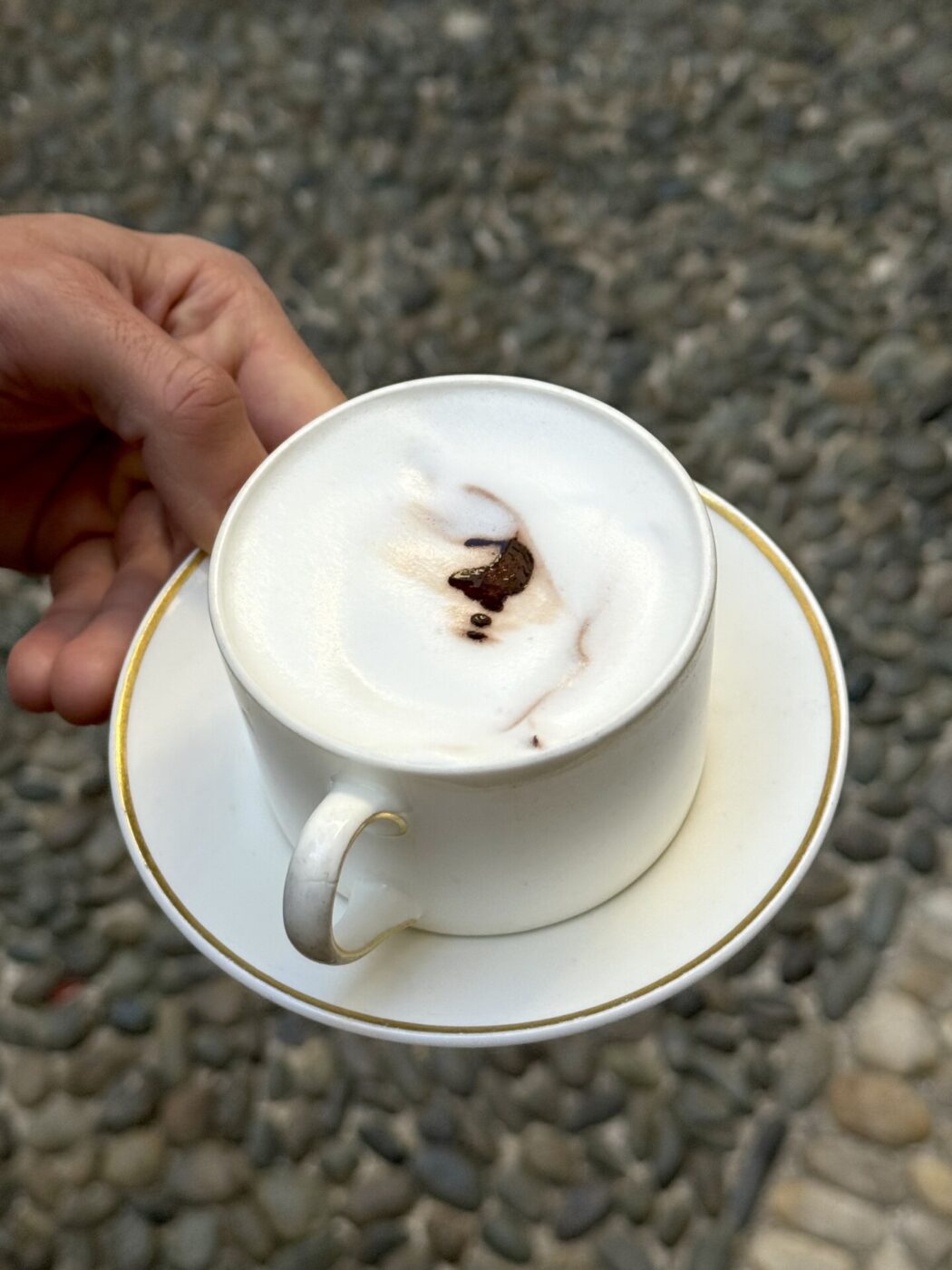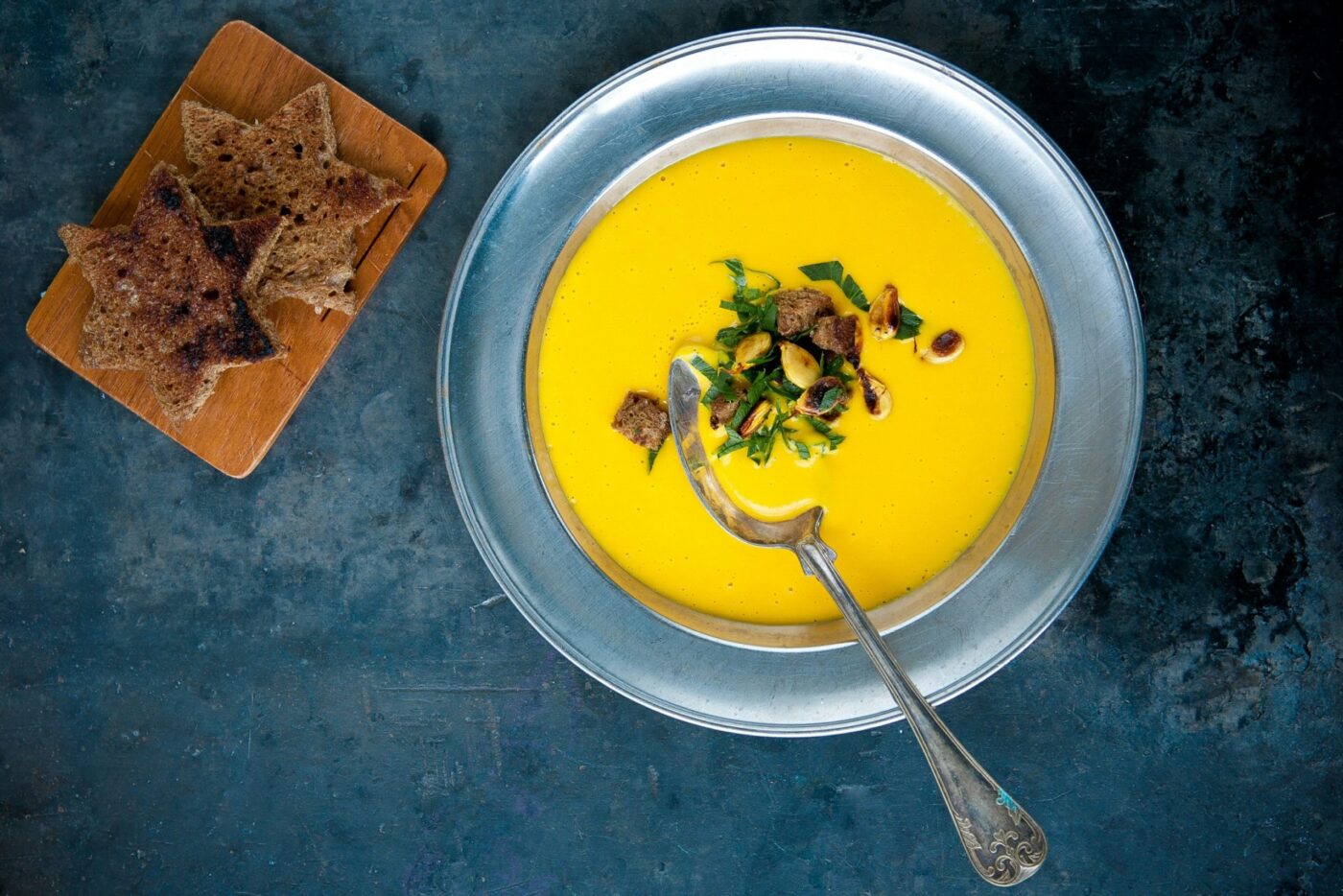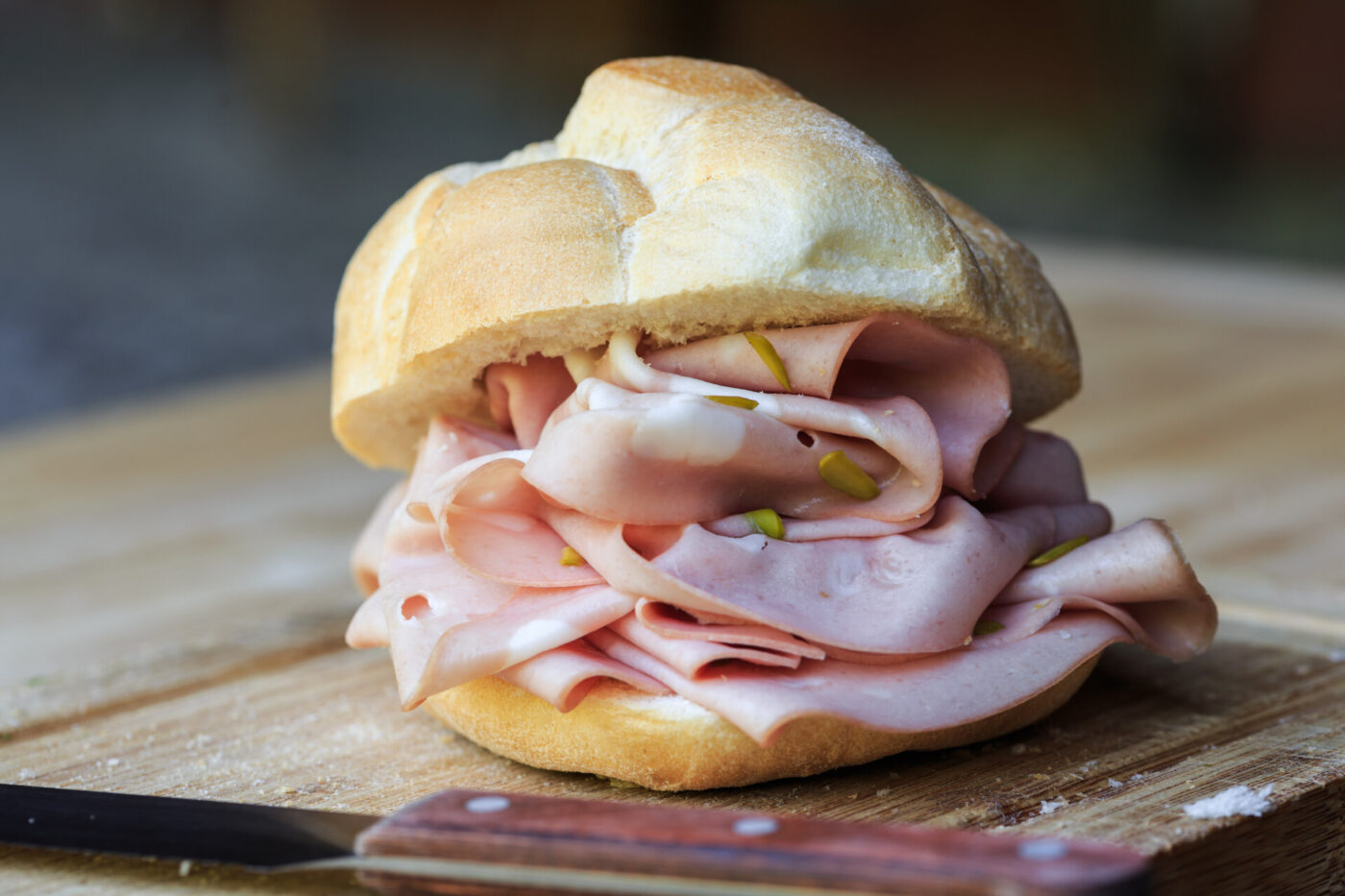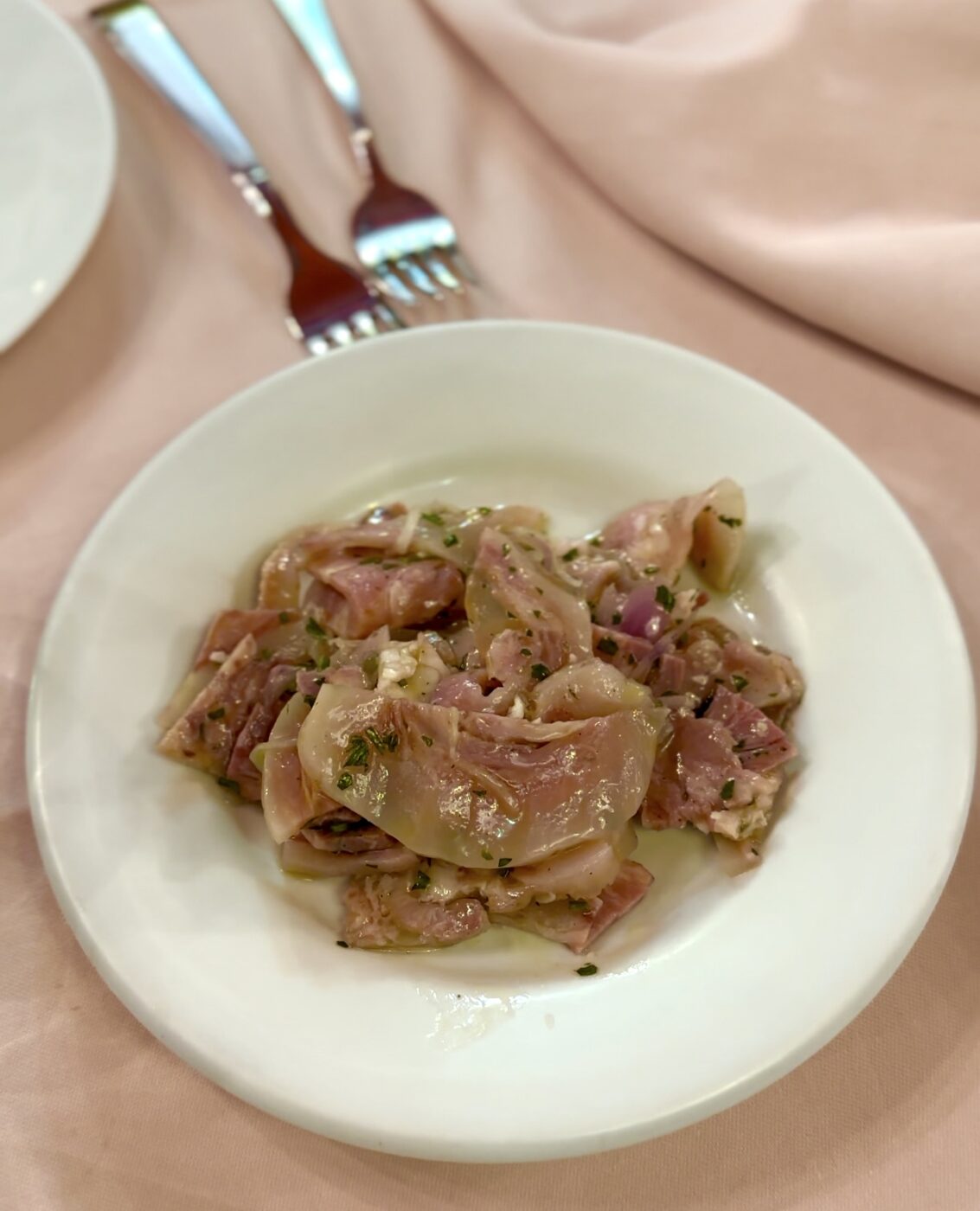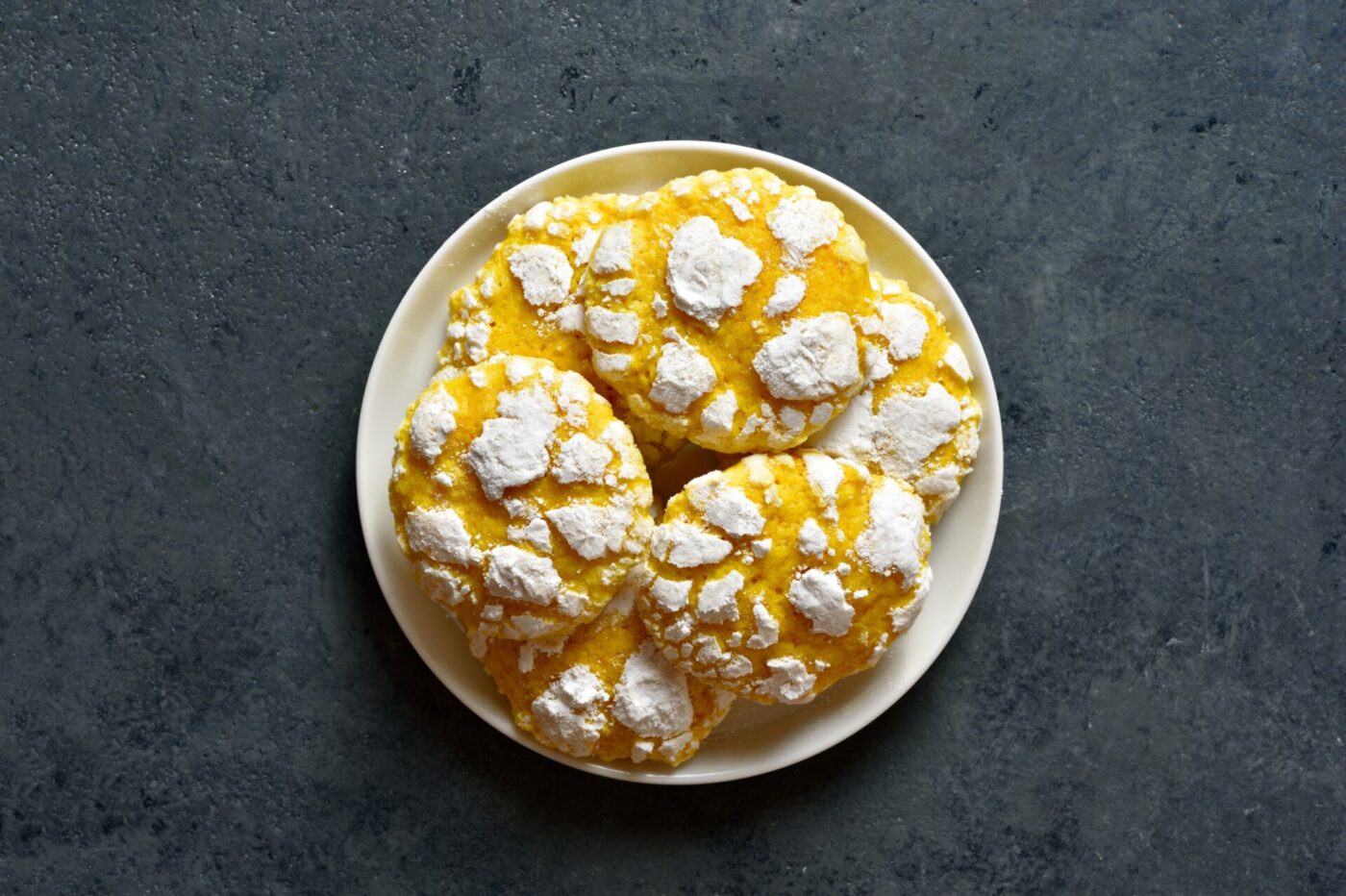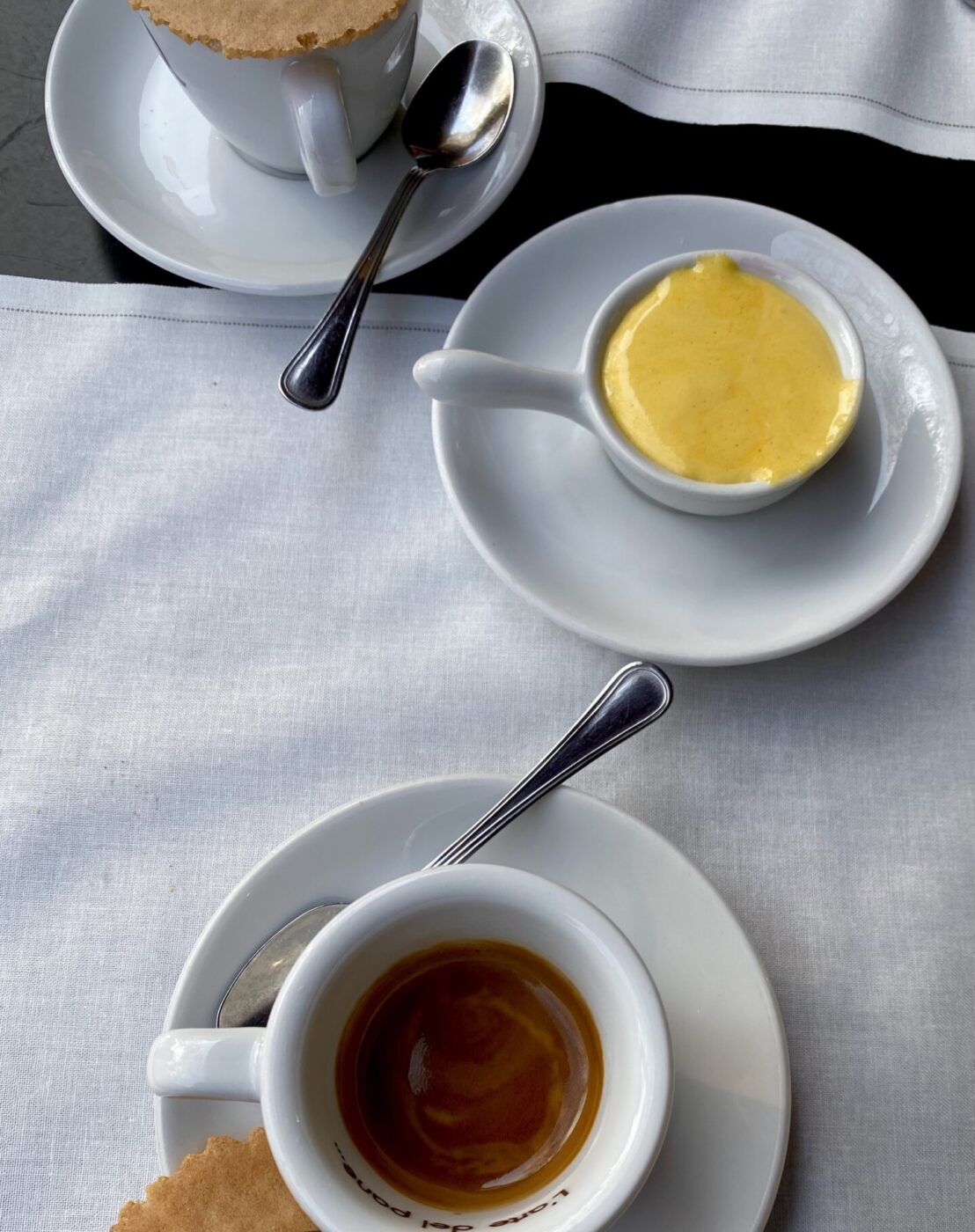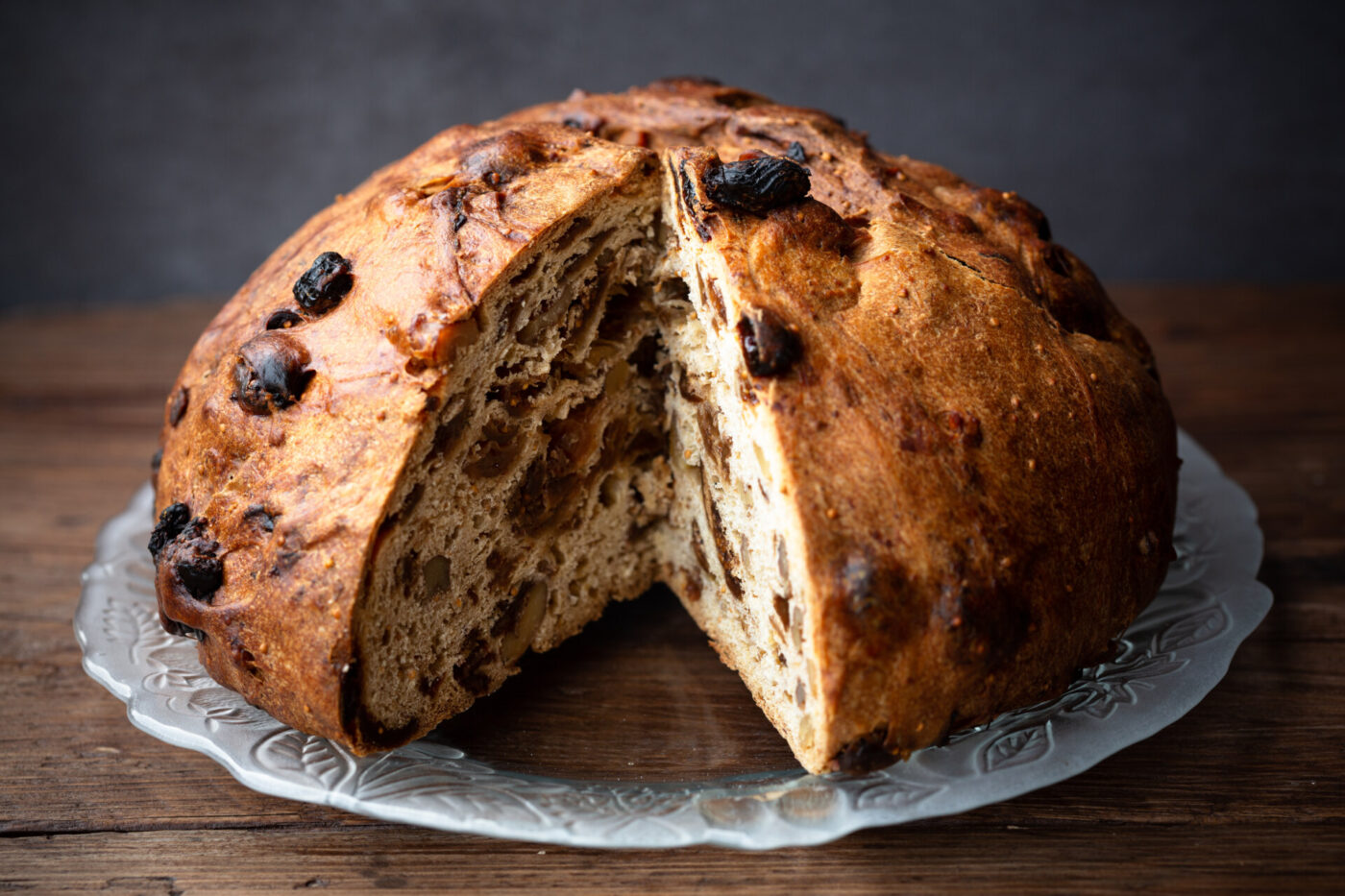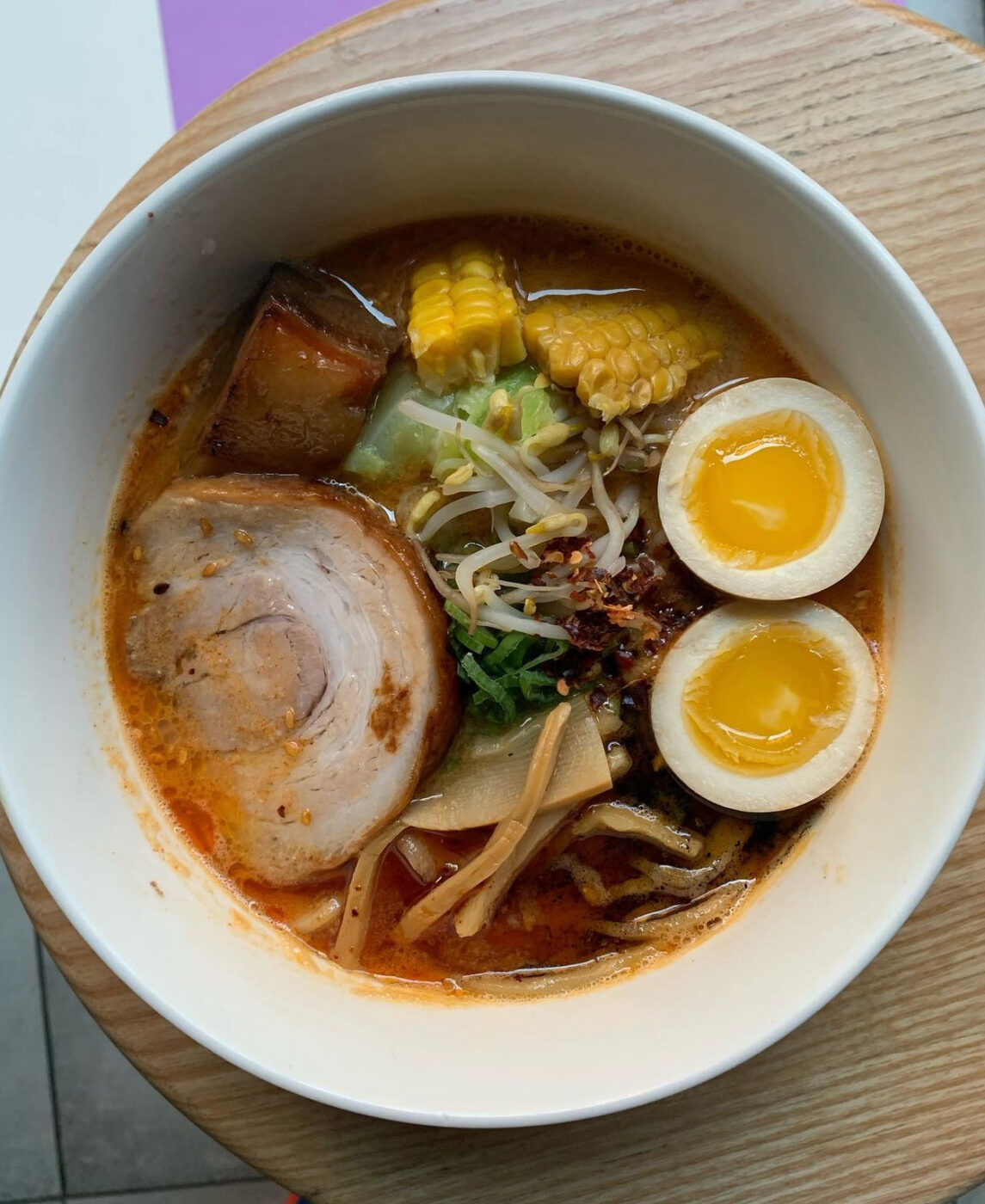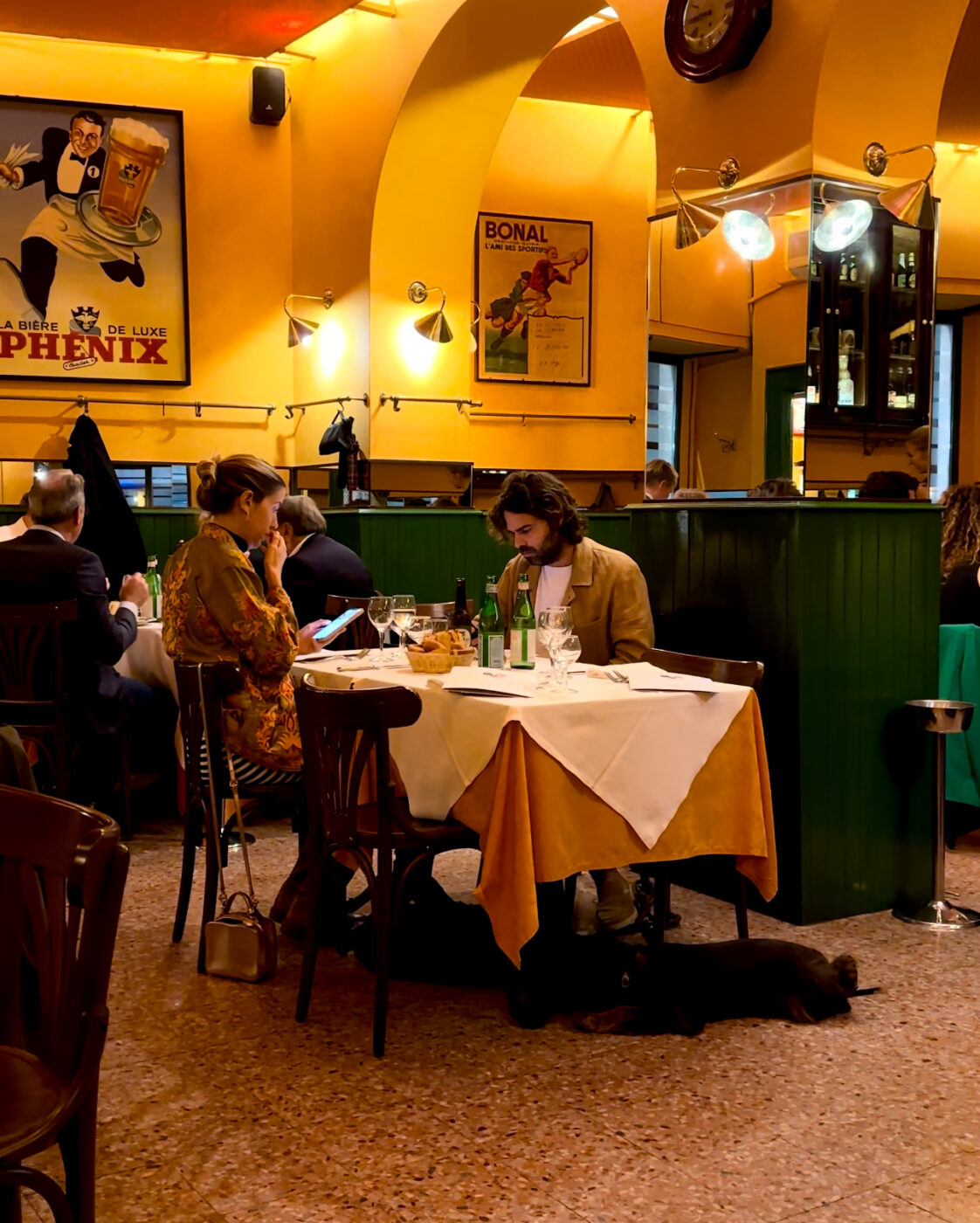Milan is not like other cities in Italy. While the country has a (rather on-point) reputation for holding steady to its culinary roots, Milan has always been forward-looking, preferring the innovative and the experimental to the traditional. This means that the Lombard capital’s gastronomic identity may not be as strong as those of other cities–say, Florence or Rome–with even the menus of the “classics” featuring dishes picked from neighboring regions like Piedmont or Emilia-Romagna or touched by influences further afield. While we’ve had to argue to pare down other installments in our “20 Foods” series (*cough cough* Sicily), it was tougher to reach quota here. That said, here are 20 things you absolutely must eat in the fashion capital:
Risotto alla Milanese
Perhaps Milan’s most famous dish, this bright-yellow risotto gets its color, perfume, and earthy-sweet flavor from saffron. Historically a luxury spice, saffron was used to dye stained glass windows, including those of the Duomo di Milano. It’s said that this namesake risotto was invented in 1574 when Valerio della Fiandra, a painter employed at the Duomo, added saffron to the rice as a joke at his daughter’s wedding, as his new son-in-law was a painter as well–and nicknamed Zafferano. You’ll often find the risotto topped with ossobuco (see below), but it’s fantastic to eat on its own, when the delicate flavor can really shine. And, if you can’t make it to Milan, you can find Italy Segreta’s recipe for risotto alla Milanese here.

Courtesy of Da Giacomo
Minestrone Milanese
A soup that has made its way beyond city limits (and country borders), minestrone is said to date back to the early 1800s–to exactly where, it’s hard to say. Ligurians vehemently claim the dish, while others point to Piedmont, but regardless, the Milanese version is an all-time classic. There’s no exact recipe–the point of the dish being to use whatever’s on hand–and you’ll find a completely different version offered in the winter, served hot, than in the summer, served cold or lukewarm. Carrots, zucchini, cabbage, potatoes, green beans, celery–any and all seasonal vegetables are thrown in, as are beans, herbs, pork products, tomatoes (sauce in the winter, fresh in the summer), and rice. (Southern Italian versions sub for pasta instead.) It’s topped off with a generous grating of Parmigiano or pecorino.
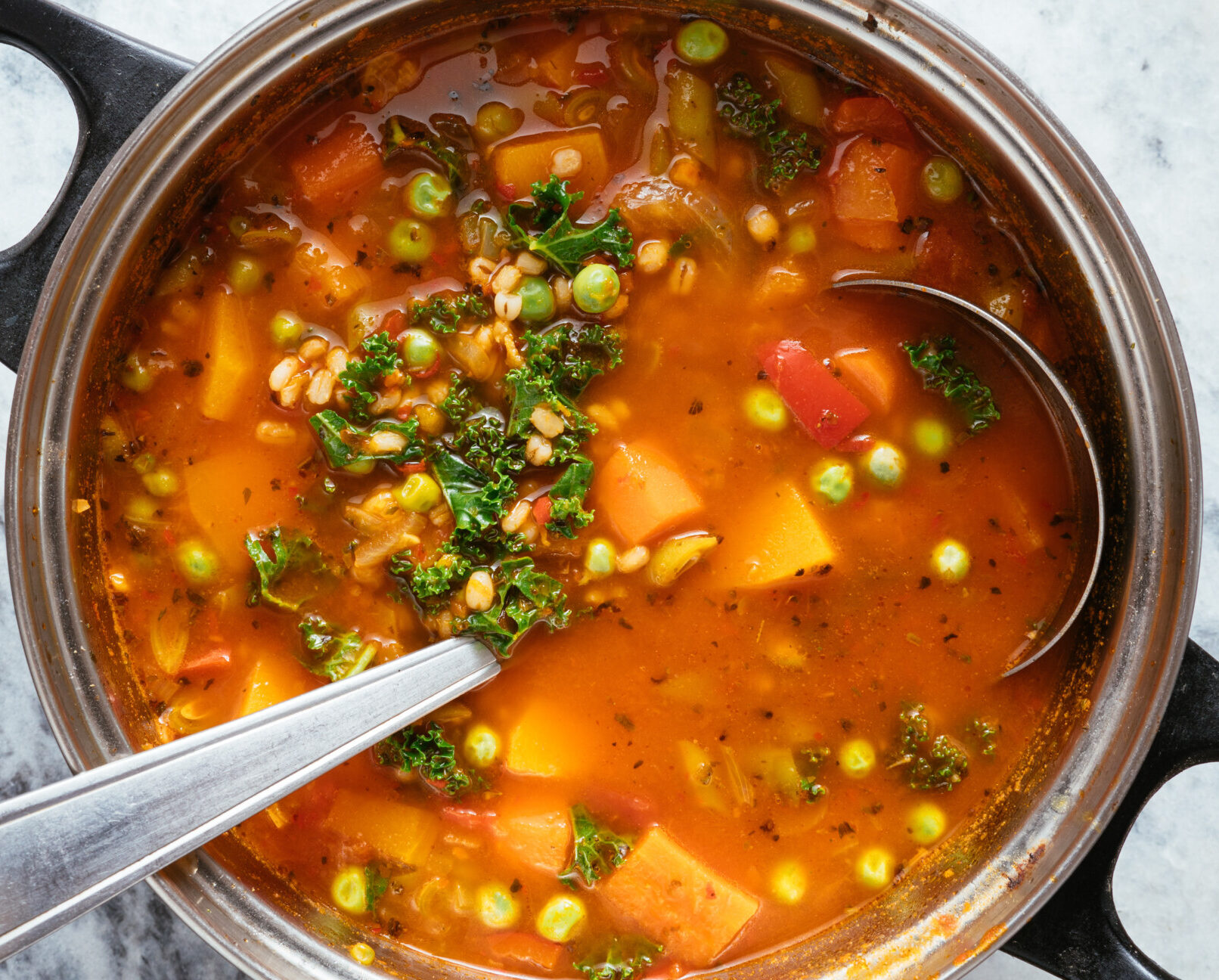
Mondeghili
Milan’s contribution to the polpetta canon, these meatballs are heavy on flavor, thanks to another waste-not-want-not recipe that uses all the tastiest bits of leftover meat. Descended from the albondigas introduced during Spanish rule, mondeghili are made with leftover boiled or roasted beef scraps, enriched with mortadella, sausage, or liver, and mixed with eggs, bread, and cheese. Shaped into oblong spheres, they’re then breadcrumbed and pan-fried in butter; the result is a crunchy exterior and a melt-in-your-mouth interior. Make them at home with this recipe, courtesy of Italy Segreta contributor Carlotta Panza’s very own grandfather.
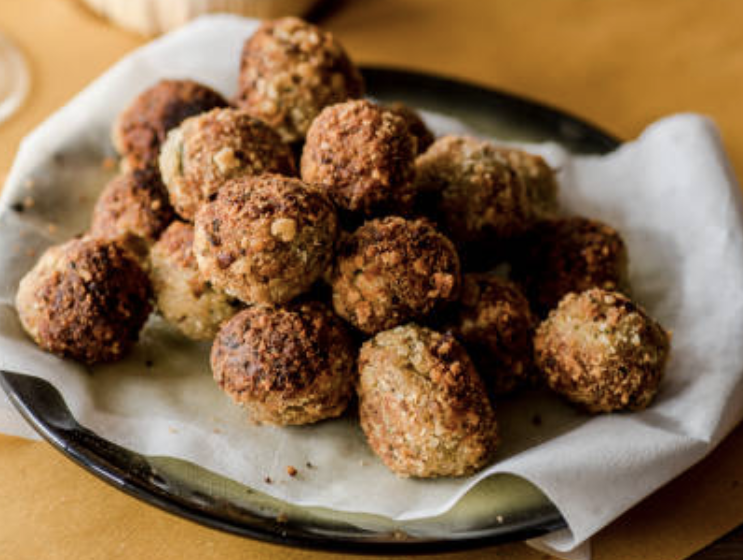
Cassoeula
This hearty, cold weather stew of pork pieces, verzini (fresh pork sausage), and cabbage, cooked in a casserole (hence the name), has two main origin stories. The first traces its origins to the January 17th celebration of Saint Anthony the Abbot, which historically coincided with the pig-butchering season’s end. At the time, all the less-prime pig cuts needed to be used immediately, while choice cuts would be hung to cure; the solution was cassoeula. The second dates it to the 16th century Spanish occupation, positing that an army officer taught the dish to his lover, the cook of a noble Milanese family. Today, it’s popular to add sweetbreads and offal to the stew, though, traditionally, less enticing pork bits were all that were included: ear, rind, trotters, tail, snout, etc. Further, the wintertime favorite should be eaten after the first frost, when the cabbage has a higher water content and thus becomes softer during the cooking process. Serve with polenta–the soft kind–and a full-bodied red wine.

Costoletta alla Milanese
Don’t call it cotoletta–or schnitzel! In Milan, it’s “costoletta” or “cutuleta”. This tender veal cutlet, coated in breadcrumbs and fried in butter, is another Milanese signature. Served on the bone, the meat can either be prepared “ad orecchia di elefante” (as an “elephant’s ear”), pounded until quite thin and large, or thick, at least “two fingers high” with a light pinkness on the inside, as the locals would have it. Most sources point to its invention on September 17th, 1134, for a feast at the Basilica of St. Ambrose in honor of the name-day of Bishop Ambrose’s brother Satyrus–countering any who might claim the Milanese borrowed from their Austrian neighbors. Adventurous cooks should head this way for the Italy Segreta way to make it at home.
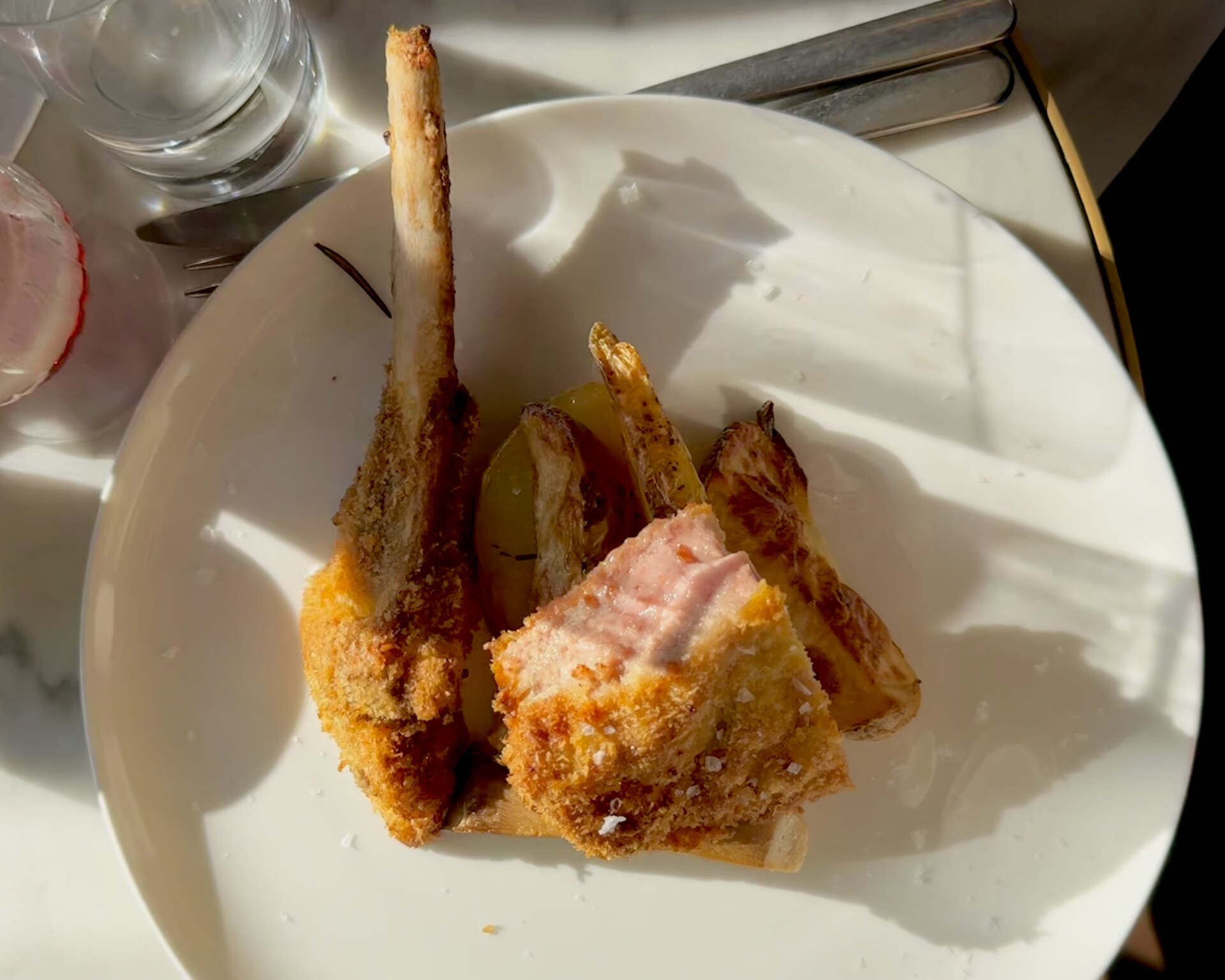
Ossobucco
Translating to “bone with a hole”, ossobucco uses horizontal cuts from the cow’s hind shank, for slices of meat, bone, and marrow. Normally tough, these cuts are softened to the point of falling off the bone by a lengthy braising in butter, white wine, and meat broth flavored with vegetables. While the original recipe forgoes tomatoes, you may find versions today that mix a bit of tomato product into the braise. The meat is garnished with gremolata (a mixture of chopped parsley, garlic, and lemon zest) and often served atop or alongside risotto alla Milanese.

Courtesy of La Madonnina
Panettone
In Italy, Christmas isn’t Christmas without panettone. Dating back to the 1400s, this leavened brioche bread is as much an integral part of the season’s decor and food as San Niccolo himself. Light and airy, with a hint of sweetness, panettone was born in Milan, though it’s long outgrown its hometown, with incredible panettoni to be found all across Italy (and abroad!). The story goes that, when the Sforza family’s head chef burned a cake meant for the nobles’ holiday feast, Toni, a kitchen assistant, was quick on his feet: using the mother yeast he’d set aside for his own celebration, Toni concocted a soft, leavened dough studded with raisins and candied citrus. Ludovico il Moro was such a fan that he named the bread “Pan de Toni” in the creator’s honor. Come Christmastime, you’ll find versions of this original recipe, as well as experimental varieties, courtesy of the city’s inventive bakeries, that include chocolate, chestnuts, fresh fruit, and sometimes the likes of hay, pecorino, and coffee.
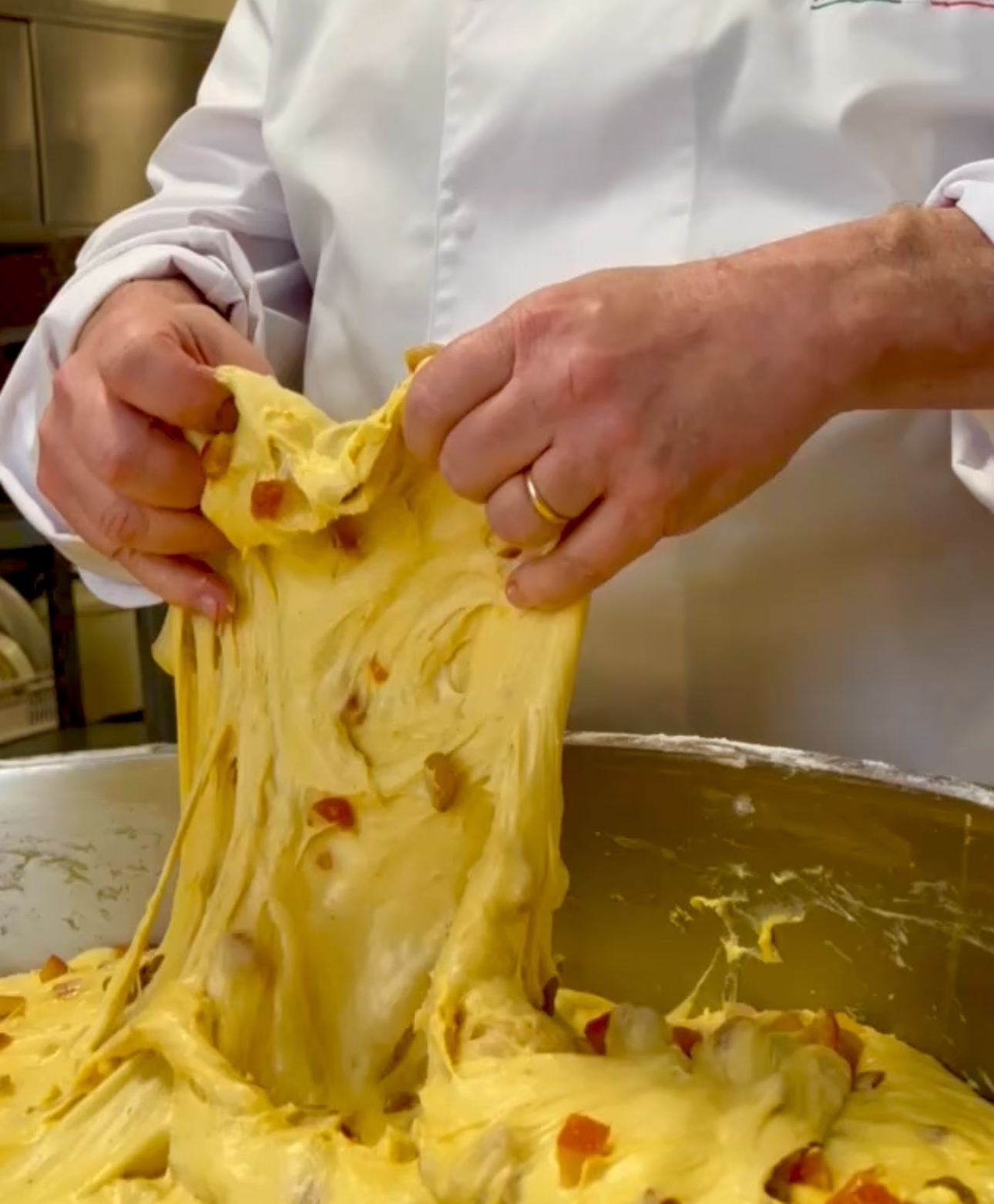
Arrostino annegato (Rostin negàa)
Literally translated to “drowned roast”, this classic secondo sees veal cutlet (with both filet and sirloin) lightly floured, browned in butter with rosemary and sage (and sometimes pancetta), deglazed with white wine, and then covered and cooked in broth until the meat is tender and glossy. The veal is best served with its jus alongside potatoes, mashed or roasted. Pellegrino Artusi describes the plate in his recipe No. 526: “You will feel a roast that, if it does not have the aroma and flavor of the one made on the spit, will have, on the other hand, the tenderness and delicacy.”
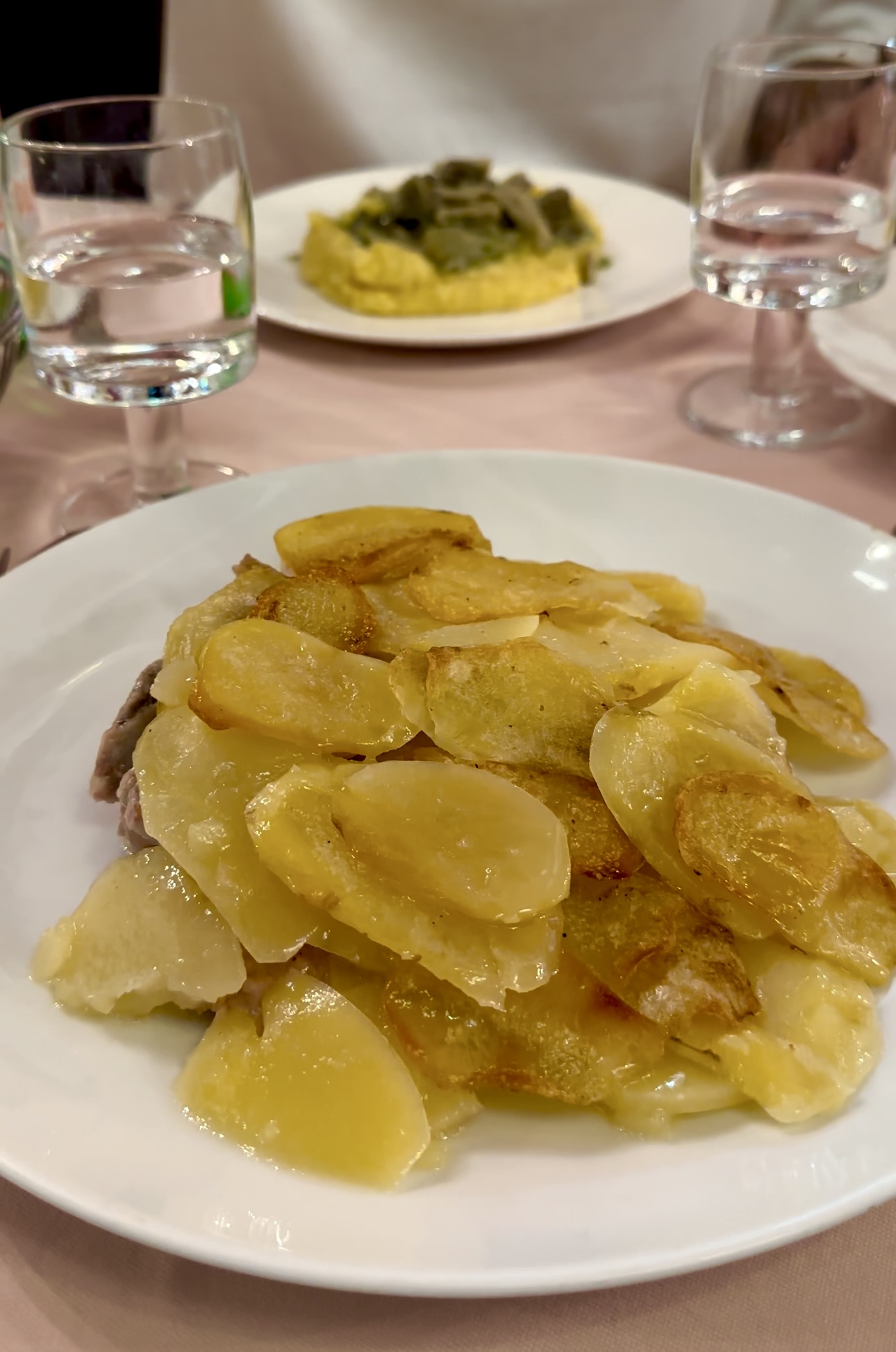
Trippa alla Milanese (Busecca)
Every Italian region–or even city–has their version of trippa, an offal-based dish that’s a hallmark of cucina povera. Milan’s uses the cow’s stomach lining, stewed for a long time in tomato sauce, enriched with beans and pancetta, and finished with Grana Padano. A farmers’ dish, busecca was traditionally consumed on any of their celebratory days–Christmas, fairs, livestock market days–and became so representative of Milanese cuisine that the city’s people have been nicknamed “busecconi”.
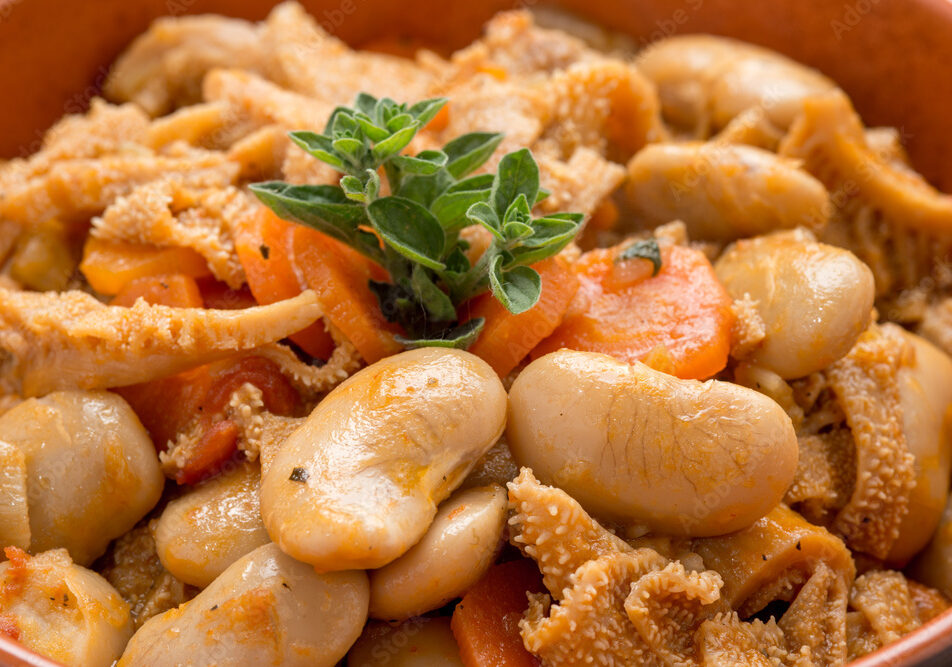
Busecchina
Though the name of this chestnut soup of sorts derives from that of the tripe stew above, it’s nothing like busecca. In this preparation–which used to be made in honor of Santa Savina on January 31st–sees dried chestnuts soaked and boiled (often with the addition of a glass of white wine), before being served with a bit of the boiling “broth” and fresh milk and cream. It’s a rather savory dessert that, again, finds its roots in peasant cuisine.

Polenta
The humble, rustic foil to risotto alla Milanese, polenta needs no introduction. Coarse cornmeal cooked into a sort of porridge, polenta has long been a versatile base for all sorts of Milanese sauces and stews, most notably, ossobucco and cassoeula. Corn first arrived in Italy in the 1490s, when Columbus sent the foodstuff to the Vatican; Lombardy was the first region to cultivate the crop on its home soil, and today some of the country’s highest quality corn (including Slow Food Ark of Taste varietals) is still grown in the area around Bergamo.

Barbajada
This frothy drink is made of coffee, chocolate, and milk and is sweetened and topped with a mountainous pile of whipped cream; some may call it the Milanese cousin of Turin’s bicerin. The cozy, caffeinated beverage was first created in the early 19th century by Domenico Barbaja, a waiter whose creation became so beloved that he opened the renowned Caffé dei Virtuosi in the upscale Piazza Scala–and achieved the means to fulfill his dreams of being a theatrical impresario. Legend has it that even Vittorio Emanuele I couldn’t start his day without a barbajada for breakfast. Popular until the mid-20th century, the barbajada was traditionally enjoyed cold during the summer and hot in the winter. Today, however, it’s a rarity in cafés, and when found, it’s almost always served hot. Click here to learn how to make it, as told to us by bartender Ottone Kleon of the glamorous Pasticceria Cova.

Minestra di Zucca alla Milanese
Cheap and easy to make, but rich in flavor, this Milanese pumpkin soup has just four ingredients: pumpkin, milk, Ditalini (teeny tiny pasta tubes, which can be subbed for rice, if desired), and Grana Padano. Flavorings like nutmeg or rosemary are fantastic, if optional, additions. Cooked and pureed, the pumpkin imparts a hearty dose of sweetness and creaminess, while the milk and cheese brings the soup back into the savory category. It’s one of those dishes that the Milanese grow up on.
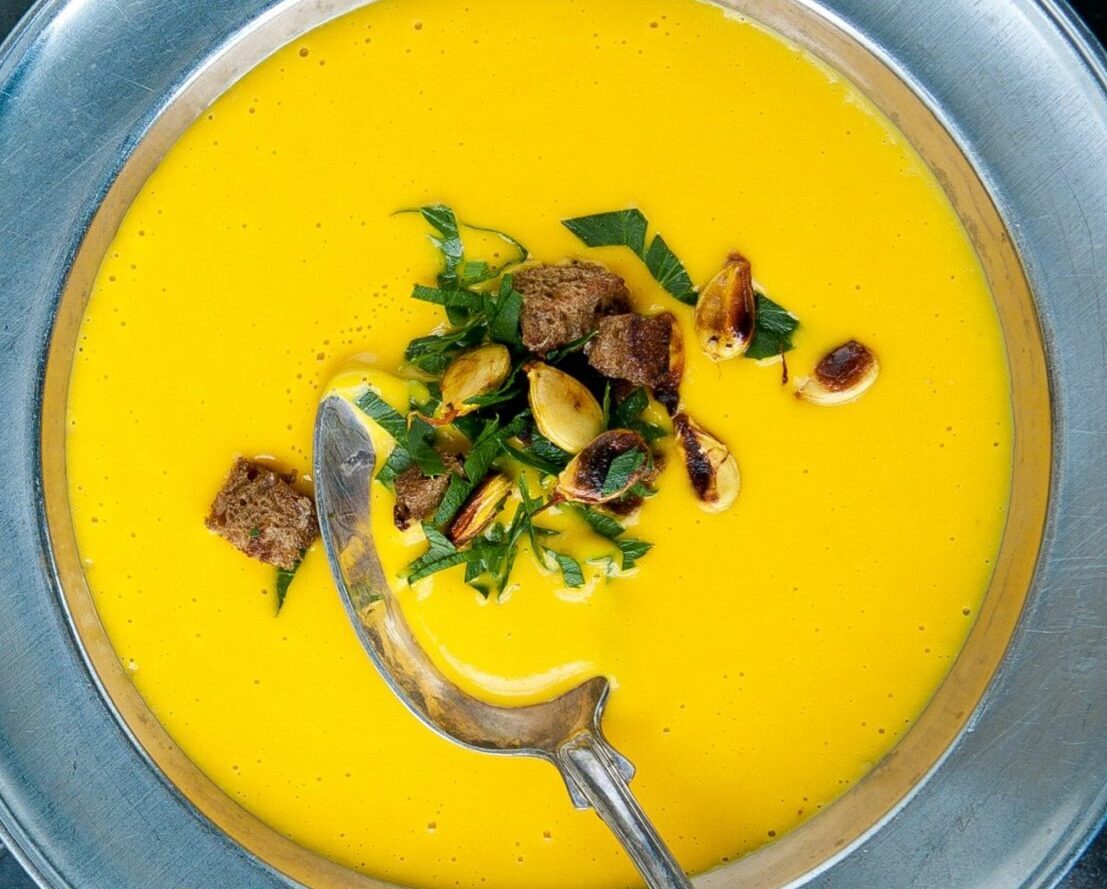
Michetta (it’s like the Rosetta Milanese)
Milan’s sandwich bread of choice, shaped like a star or a rose (hence the name “rosetta” in other parts of the country), this hollow bread roll is crunchy, crunchy, crunchy on the outside. The michetta originated in the early 18th century during the Austro-Hungarian occupation of Milan. Imperial officials disliked the local bread, micca, for its excessive crumbs and introduced their traditional kaisersemmel (translating to “emperor’s bread”), a soft, rose-shaped roll. The humid Lombard climate, however, would turn the bread rubbery, so Milanese bakers innovated by hollowing out the crumb for a crispier version that could withstand the weather. Refusing to bow to the Austro-Hungarian emperor by using the word “kaiser”, they came up with “michetta”, a blend of “kaisersemmel” and the Lombard “micca“. Two centuries later, after World War II, the introduction of the resilient Manitoba flour through the Marshall Plan revolutionized the roll, making it lighter, crunchier, and perfect for filling, as we know it today.
Artistic homage has even been paid to Milan’s carby export with Gaetano Pesce’s eponymous modular sofa and Piero Manzoni’s Achrome (1962).
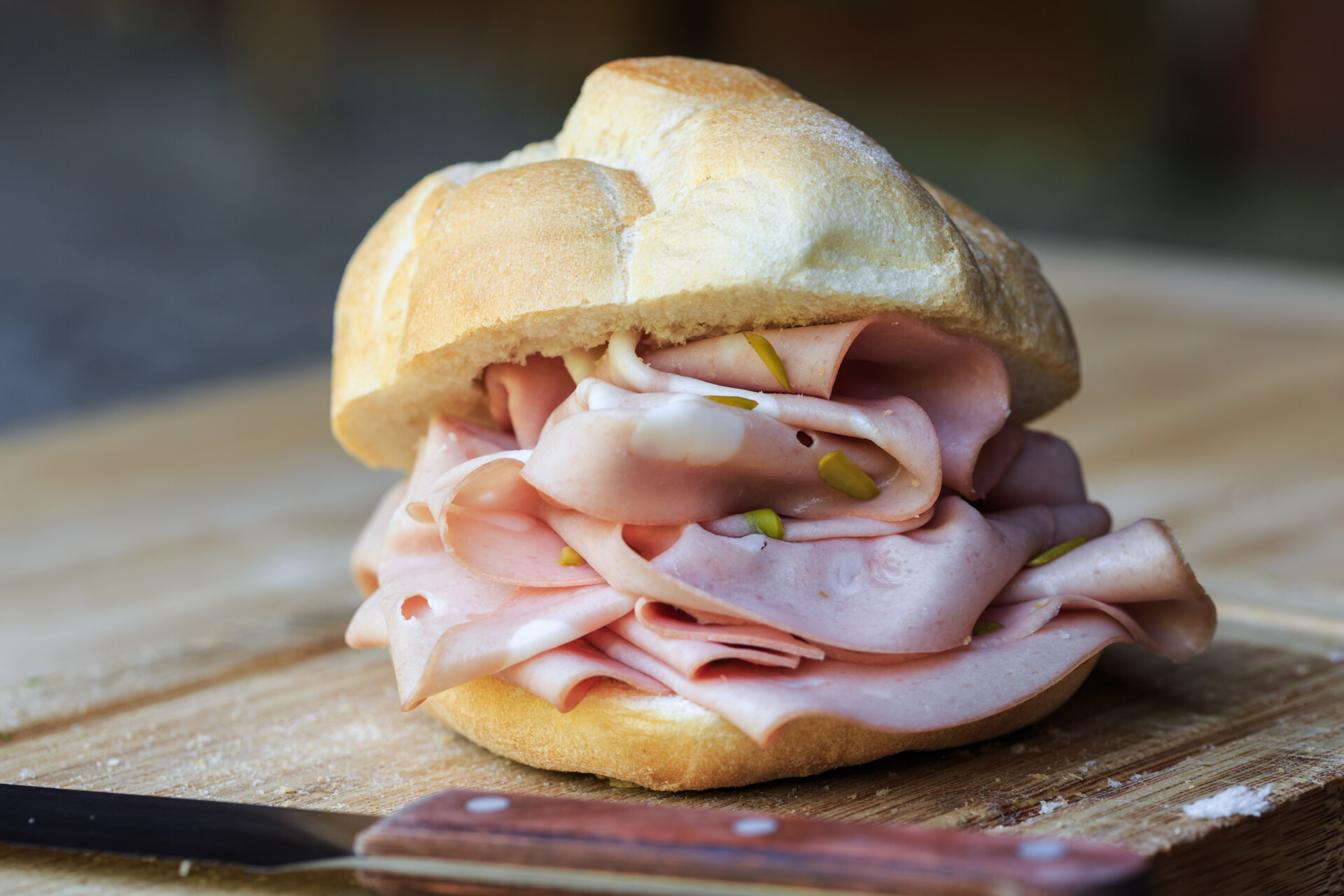
Insalata di Nervetti
A historic tavern classic, this antipasto, a “salad” of veal trotters, is served exclusively at room temperature. Cooked in broth for hours, drained, boned, cleaned, and cut into thin strips or small cubes, the trotters are then tossed with red onion, parsley, oil, vinegar, salt, and pepper. It’s not the easiest to find on menus these days, though some traditional trattorias still prepare it, as do some butcher shops.
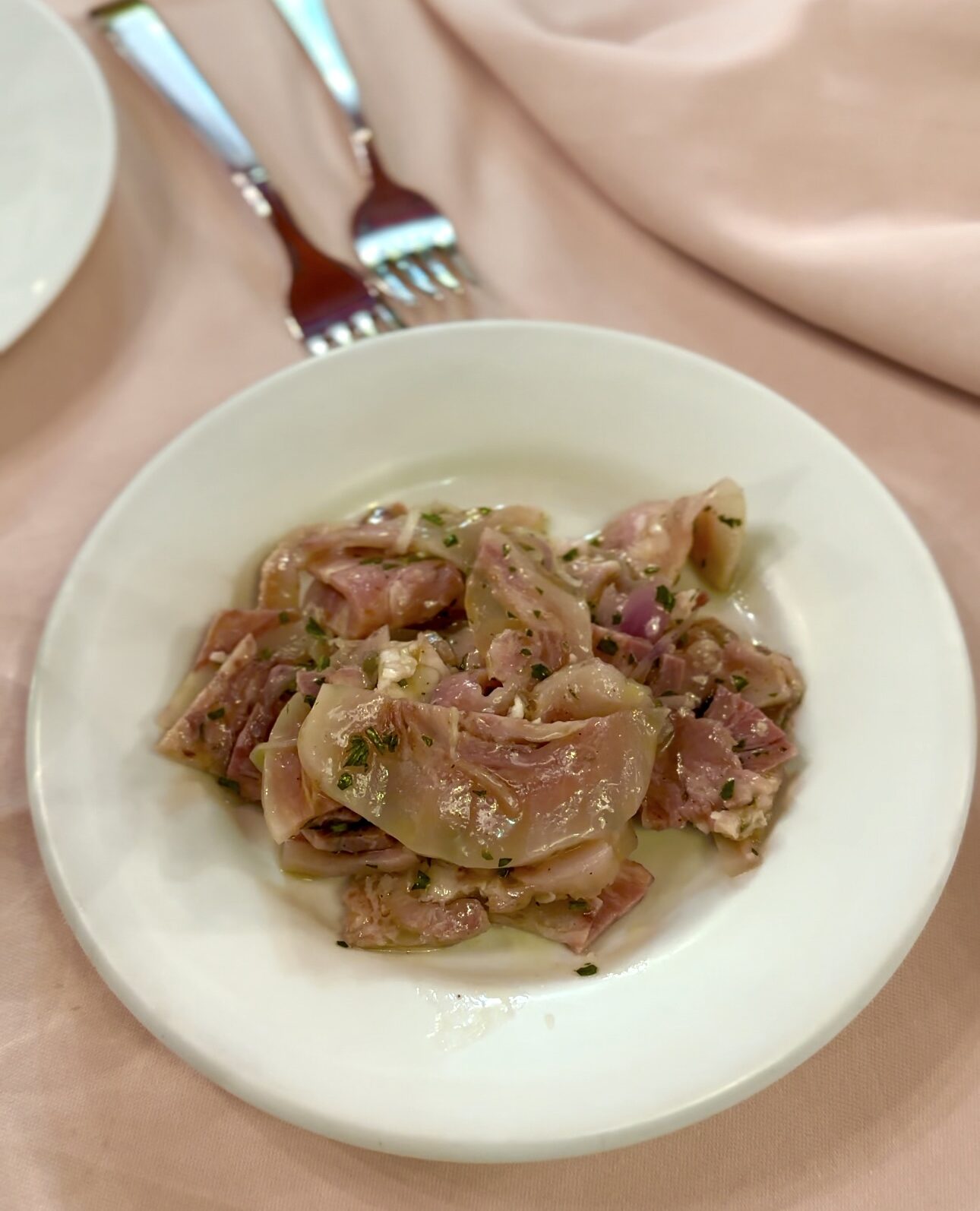
Pan Meino (Pan de Mej)
These elderflower-scented cookies, served with fresh cream, are a Milanese necessity on April 23rd, the day of Saint George–so necessary that they’re even handed out to school kids in class. (If you’re not an elementary student, don’t fret, you can also find the buttery yellow cookies in any bakery or Milanese kitchen.) Originally made with millet (“mej” in dialect), the cookies are today made with corn and wheat flour for a softer consistency. There are many stories that account for the cookies’ existence, but our favorite is this one, a localized twist on the story of Saint George, popularized by returning crusaders in the 13th century: in the late 1200s, a young man named George saves Princess Cleodolinda of Morchiuso from a dragon terrorizing the region. Using his strength, wit, and, most importantly, the soporific power of elderflowers, George put the dragon to sleep, rescuing Cleodolinda and sparing dozens of villagers from further sacrifice. The most widely accepted story, however, points to the 19th century, when April 23rd was also the day herdsmen and milkmen re-upped their contracts, celebrating with cookies and fresh cream.
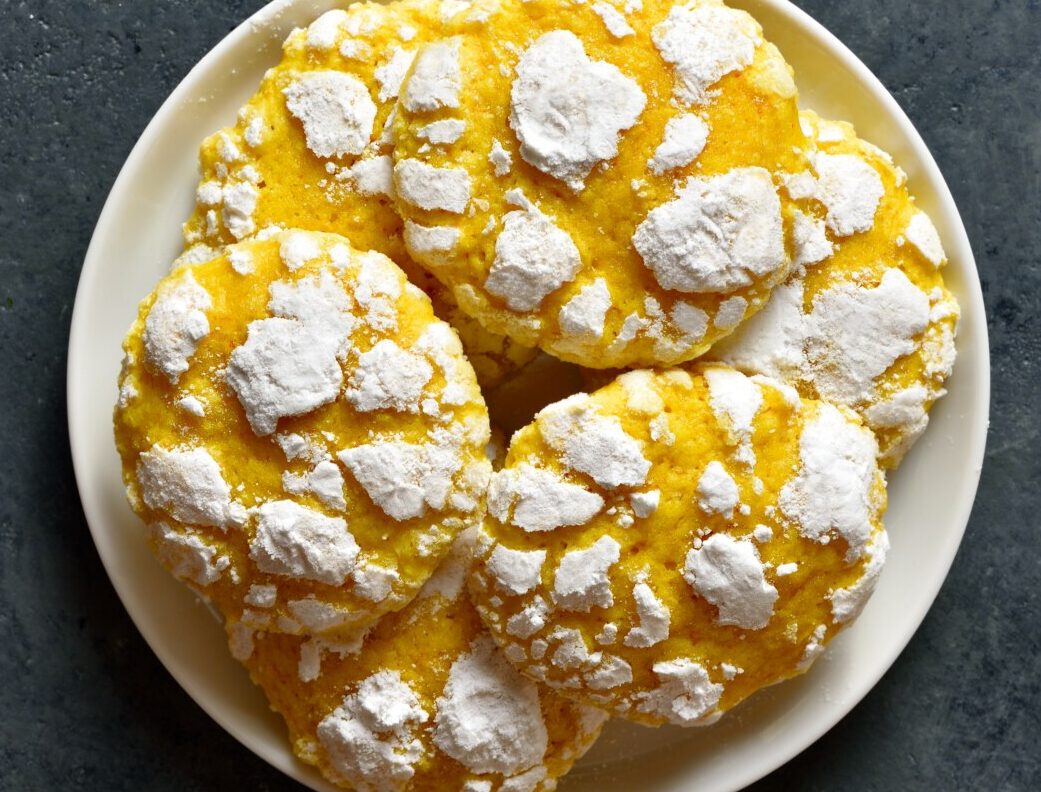
Rüsumada
Also known as rossumata, this zabaione-adjacent cream is made with egg yolks, sugar, and red wine (old recipes recommend Bonarda or Barbera d’Oltrepò), beaten by hand until soft and frothy. Served with shortcrust cookies or pan meino or drunk straight from the cup, rüsumada, unlike zabaione, is had cold and, most commonly, during the summertime. Elder generations of Milanese will recall that rüsumada had the reputation of being energizing and restorative, so much so that it was widely popular amongst athletes.

Carsenza
Reduce, reuse, recycle could as well be the motto of this New Year’s Eve dessert. Starting with Christmas’s leftover white bread dough, Milanese work in all sorts of fresh or dried fruits that are hanging around–figs, apples, grapes, pears, etc–even if they’re a little past their prime. As with the French galette du rois, in which a little token or almond is hidden, a bean or a chickpea is often tucked into the dough; whoever receives the slice with the token is bound to have a year of good luck.
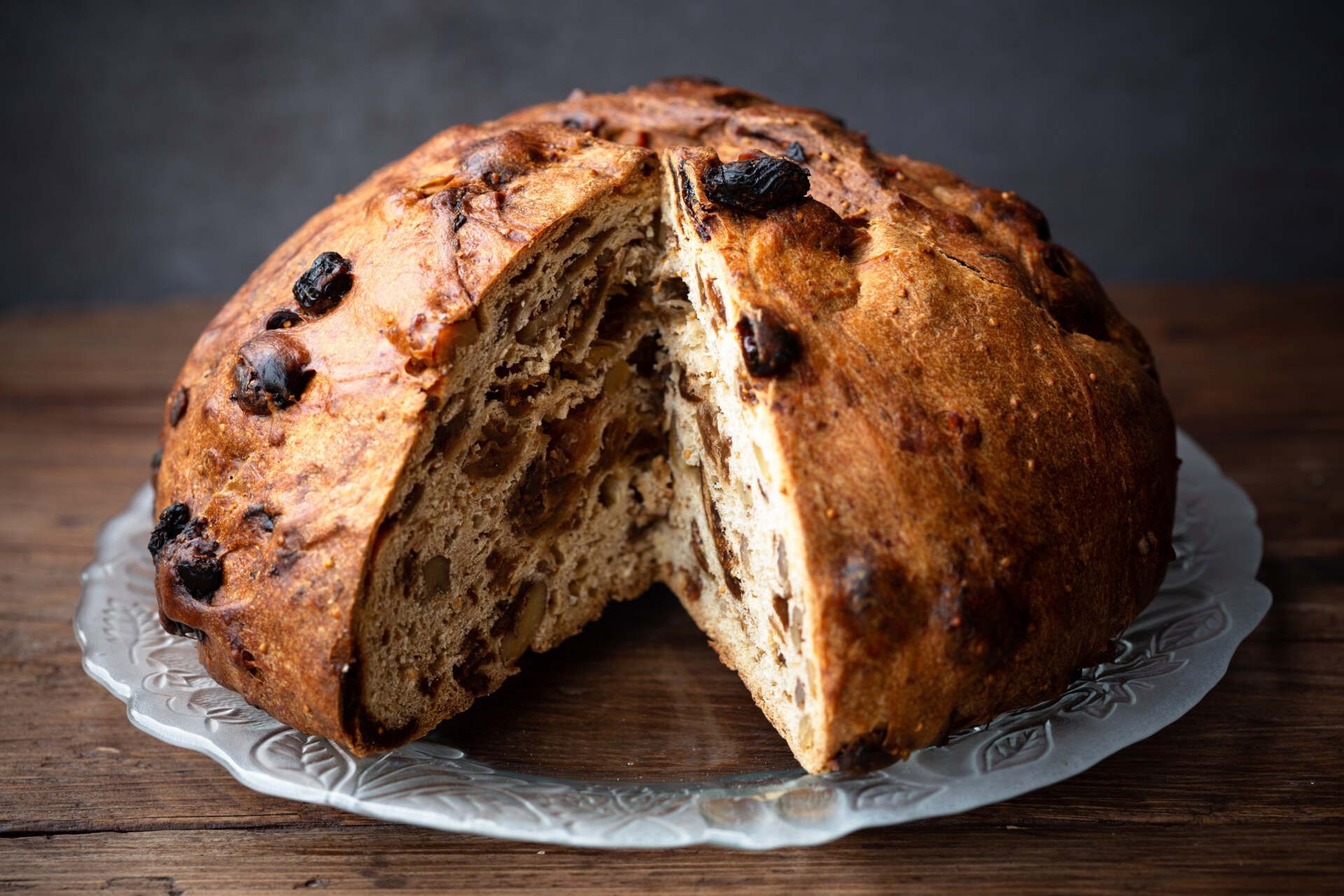
Apericena
Milan has long been the capital of the aperitivo–and not just when it comes to drinks. “Apericena”, aperitivo served with enough food to count towards dinner, is an art that Milan does exceedingly well, with plenty of places that offer towers of cheeses and cold cuts or massive boards of bruschetta alongside your drink for just a few euros. It’s a mainstay of the university crowd for the bang-to-buck ratio, and we highly suggest taking a one-night break from chowing down on Milan’s butter- and cheese-filled showstoppers for a snacky apericena.
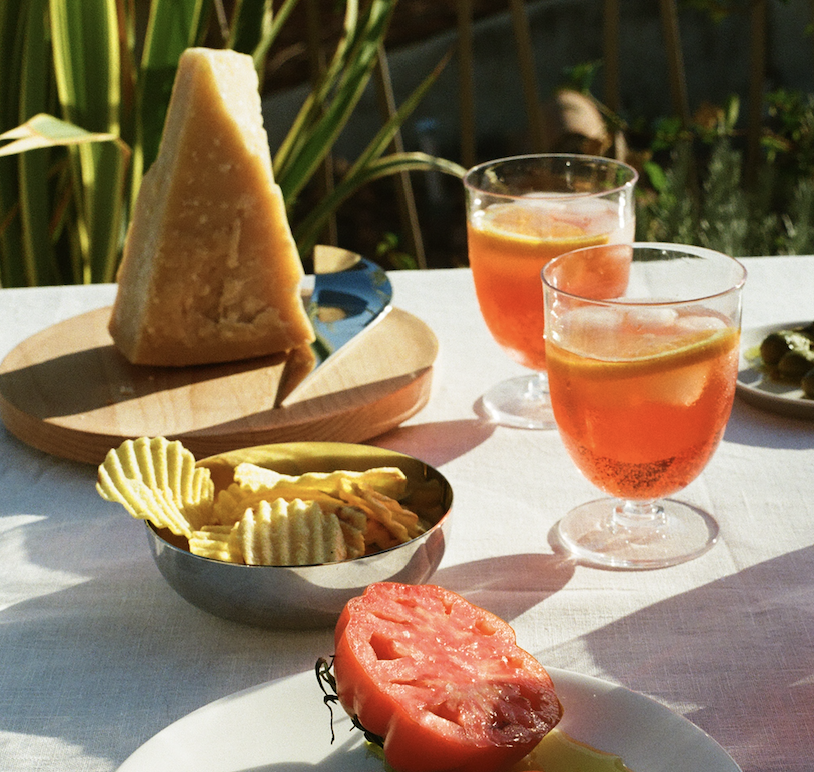
Non-Italian Food
The most diverse metropolis in the country, Milan is home to some of the best non-Italian food you can find anywhere in the boot. Head to Porta Venezia for outstanding Ethiopian and Eritrean cuisine, and don’t miss ordering zighinì, a meat stew cooked with tomato and onions and flavored with berberé, served atop injera alongside various vegetables and legumes. Go over to Chinatown for, you guessed it, Chinese food–dumplings are just the tip of the iceberg!–or almost anywhere in the city for superlative Japanese (you can find our full guide here, under “Non-Italian Restaurants”).
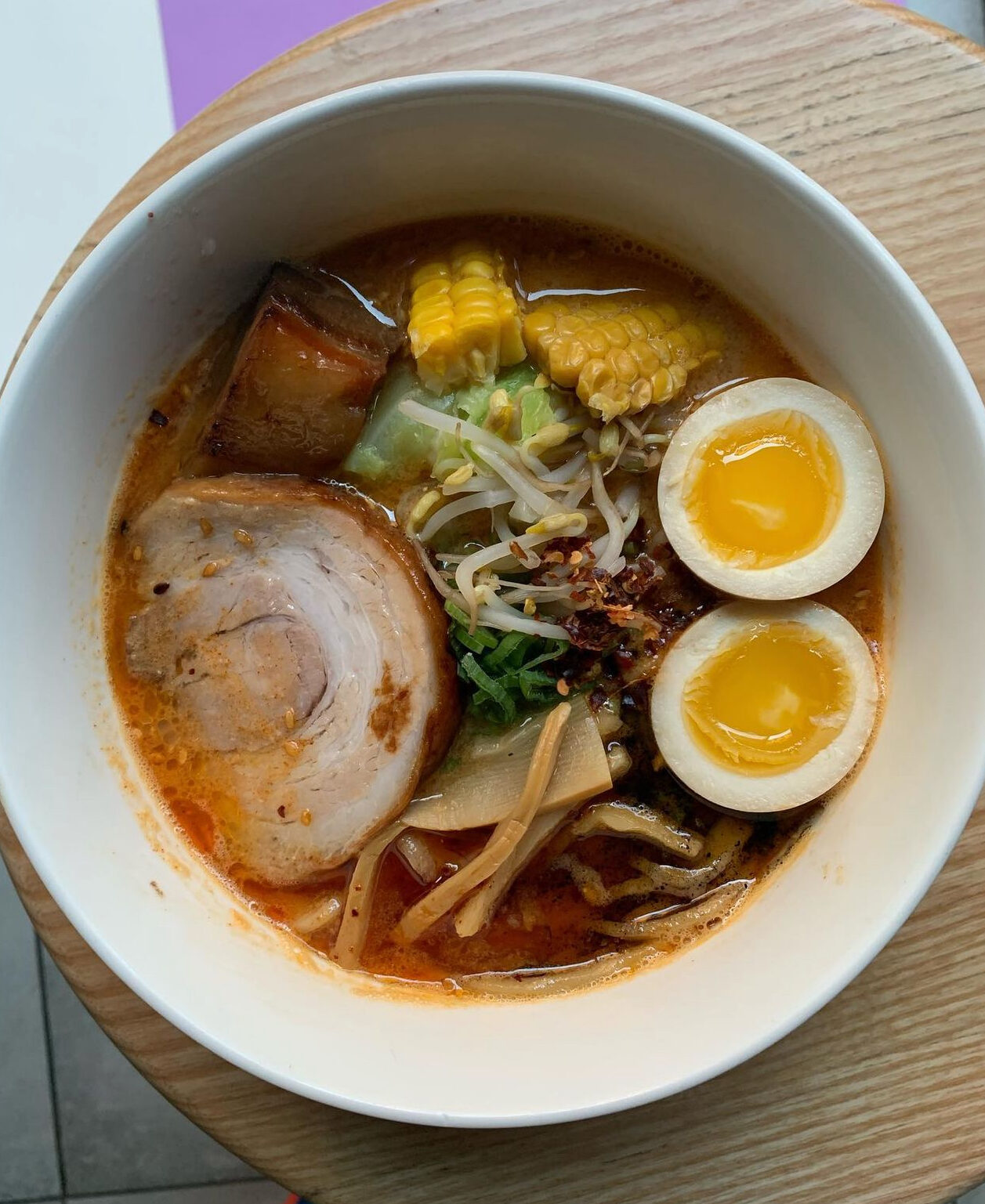
Courtesy of Casa Ramen
